唐山阿嫂 / CHINA WIFE (1957)
Original film title in Chinese: 唐山阿嫂 Tang shan a-sao
Alternative English title: She Married an Overseas Chinese
Directed by Chan Man 陈文
Written by Chor Yuen 楚原
Language: Cantonese dialect
Starring: Patrick Tse Yin 谢贤, Patsy Kar Ling 嘉玲, Nam Hung 南红, Keung Chung-ping 姜中平
Produced by Kong Ngee Film Company 光艺制片公司
椰林月/ MOON OVER MALAYA (1957)
Original film title in Chinese: 椰林月 Ye lin yue
Alternative English title: The Whispering Palm
Directed by Chun Kim 秦剑 & Chor Yuen 楚原
Written by Chun Kim 秦剑
Language: Cantonese dialect
Starring: Patrick Tse Yin 谢贤, Patsy Kar Ling 嘉玲, Nam Hung 南红, Keung Chung-ping 姜中平, Molly Wu Kar 胡茄
Produced by Kong Ngee Film Company 光艺制片公司
Film Locations:
Telok Ayer Market, Fullerton Building, Anderson Bridge,
Queen Elizabeth Walk, Padang, Tan Kim Seng Fountain,
Sri Mariamman Temple, Botanic Gardens, Haw Par Villa (Tiger Balm Gardens)
Collyer Quay, Clifford Pier
Aerial views of downtown Singapore from Asia Insurance Building and Mount Faber
Singapore harbour and waterfront, “Singapore Bund”
Nan Hwa Girls’ School (南华女学校) at Adis Road, Mount Sophia
The Chinese High School (南洋华侨中学), Bukit Timah Road
Lu Tiok Club (友竹俱乐部), 14 Tras Street (Murray Street)
Ho See Seng Tong (何思成堂), 38 Tras Street
Kwang Tung Hui Kuan (广东会馆), 69 Neil Road
Upper Chin Chew Street, Chinatown (‘Beancurd’ Street; 豆腐街)
Asia Insurance Building
Elgin Bridge, North Bridge Road
Upper Bukit Timah Road’s shophouses opposite Bukit Gombak
Bowyer Block of Singapore General Hospital
Botanic Gardens & Bandstand, Great World Amusement Park
Cathay Theatre, Cathay Building, Old Sea View Hotel (Meyer Road)
Raffles Place, Robinson & Co department store
Shuang Lin Monastery (Siong Lim Si Buddhist Temple) 双林寺, Esplanade Park
Singapore Turf Club (Bukit Timah)
Khiu Sing Hotel 侨星大旅店, 43 Tanjong Pagar Road
Shenton Way, Shenton Circus, Changi Prison
Woodlands – Johor Bahru Causeway, Woodlands Checkpoint
Tanjong Pagar Railway Station
Malayan Railway truss bridges along (Upper) Bukit Timah Road
Merdeka Bridge (Nicoll Highway)
MALAYAN LOVE SONGS IN TURBULENT TIMES
The Singapore Film Locations of Moon Over Malaya and China Wife
an essay by Toh Hun Ping
IT PROBABLY BEGAN with a suggestion by film director Chan Man to his colleague Chun Kim, general manager and film director at Kong Ngee, to “try their luck in Southeast Asia” and shoot a series of films there. This was after two earlier outputs from their film production company in Hong Kong brought in mediocre box office receipts. Apparently, the Singapore headquarters and parent company of Kong Ngee also had in mind a number of films that would appeal specifically to the audiences of Southeast Asia, then the most important and lucrative overseas film market for Hong Kong-made films.
As it turned out, on 20th and 24th November 1956, a compact location-filming crew of about ten members, including Chun Kim, Chan Man, scriptwriter/director Chor Yuen, actors Patrick Tse Yin and Patsy Kar Ling, arrived in Singapore in two batches, with three film scripts tentatively titled Blood Stains the Valley of Love 血染相思谷 (released with the same title in 1957), Quest for a Long-Lost Husband 海外寻夫 (eventually released as China Wife 唐山阿嫂 ), and Malayan Love Song 马来亚情歌 (eventually released as Moon Over Malaya 椰林月 ). These three films (since labeled collectively as the Nanyang Trilogy 南洋三部曲) were all set in Malaya and Singapore and would feature film locations from major cities and townships across the Malayan Peninsula — Singapore, Johor Bahru, Malacca, Kuala Lumpur, Penang, Ipoh and Taiping.
This article will attempt to identify the Singapore film locations in Moon Over Malaya and China Wife, and present brief historical and contextual information surrounding these real locations and places – what are usually considered contingent to the film plot; to consider the significance and role of selected ‘on-location’ scenes in the diegesis of the film and how they are meaningful as documentary filmic impressions of Singapore’s (urban) landscape from a bygone era.
Postcards from (a different) Singapore
In a manner as straightforward as would be expected of a ‘commercial Hong Kong-produced drama film about life in Singapore’, Moon Over Malaya begins with a two-minute montage sequence that presents a dozen of Singapore’s well-known landmarks (see images below), all of which are still extant today and mostly gazetted as national monuments. The sequence appears as a ‘postcard-pack’ rundown of major places of historical and tourist interest that would appeal to Hong Kong filmgoers with an eye for the exotic, or resonate with a local audience that would be delighted upon seeing familiar sights on the silver screen. It also serves the purpose of situating the film story firmly in a post-war modernizing Singapore of the 1950s, with depictions of new state-of-the-art skyscrapers standing adjacent to colonial architecture and religious buildings constructed in earlier times.
First row, from left to right: Telok Ayer Market (today’s ‘Lau Pa Sat’), Fullerton Building or General Post Office (today’s Fullerton Hotel), Anderson Bridge. Second row: Queen Elizabeth Walk, Supreme Court and City Hall (today’s National Art Gallery, under construction), Tan Kim Seng Fountain at the Esplanade Park. Third row: Sri Mariamman Temple along South Bridge Road, Bandstand at the Botanic Gardens and Tiger Balm Gardens.
Filmed from Collyer Quay’s Asia Insurance Building, then one of the two tallest buildings in Singapore; the other being The Bank of China Building (the skyscraper block in the middle ground, left of centre in the collage). Both buildings were completed in 1954 and are still standing today, though overtaken in height by taller structures over the years. The cupola in the foreground belonged to the ‘modern classic style’ Ocean Building, which housed the headquarters of the Straits Steamship Company. It was demolished in 1969. Raffles Place can also be located at the bottom left corner and Clifford Pier (today’s Fullerton Bay Hotel) on the right in the collage.
Notable landmarks in the foreground: Church of St Teresa (established in 1929) at Kampong Bahru Road; middle ground – Tanjong Pagar Railway Station (opened in 1932) and Kampong Silat SIT flats (Singapore Improvement Trust flats; built between 1949 and 1952); and background – the two tallest skyscrapers in the city were the Bank of China Building (left) and the Asia Insurance Building (right).
In comparison, the narrative in China Wife begins in Macau and moves to Malaya via Singapore when the main protagonist Ho Ah-gau (Keung Chung-ping) sojourns to ‘Nanyang’ (Ipoh) to work as a tin miner to pay his debts, accompanied by his younger cousin Tai-sing (Patrick Tse). Together, they travel by sea to Singapore, the main port of call for train connections to Peninsula Malaya, and arrive at the Singapore harbour (Clifford Pier) on a motorized boat, probably after a transfer from a larger steamship anchored off the waterfront. Here, the audience is treated to a panning shot of the waterfront along Collyer Quay – Singapore City’s skyline of the 1950s, which is thought to bear a resemblance to the Shanghai Bund. Unmistakably, this early sequence also establishes firmly that the story the film is about to present is set in a then-contemporaneous 1950s Singapore.
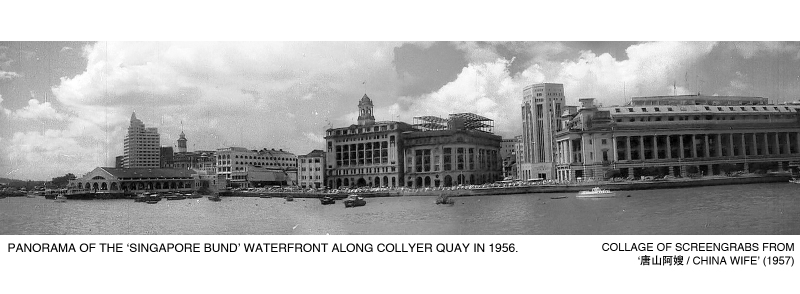 Left to right: Clifford Pier, Asia Insurance Building, Ocean Building, Alkaff Arcade, Shell House, Change Alley, Union Building, Hong Kong & Shanghai Bank (with more floors being added), Bank of China Building, and Fullerton Building (also the General Post Office).
Left to right: Clifford Pier, Asia Insurance Building, Ocean Building, Alkaff Arcade, Shell House, Change Alley, Union Building, Hong Kong & Shanghai Bank (with more floors being added), Bank of China Building, and Fullerton Building (also the General Post Office).
Left: Ah-gau & Tai-sing in a small motorized boat, when they first arrive at the Singapore Harbour. Right: Ah-gau’s wife, So-ching (Nam Hung), arrives in a similar manner when she too makes the sojourn to Singapore-Malaya, in a later part of the film, to search for her ‘long-lost’ husband.
A ‘postcard-worthy’ establishing shot that precedes scenes of Tai-sing and So-ching seeking out the whereabouts of Ah-gau in Singapore. Possibly filmed from the Bank of China Building. Notable landmarks in the foreground: Boat Quay’s shophouses and go-downs; middle ground – Elgin Bridge, Hill Street Police Station (left); and background – Fort Canning Lighthouse (left), Cathay Building (right) and the dome of Raffles Museum (renamed the National Museum in 1965).
Chinese Vernacular Schools and Student Activism
In Moon Over Malaya, after the somewhat ‘touristy’ introductory sequence, the film story proper commences with the main protagonist Ngok Ming (Patrick Tse) visiting a school (“Overseas Chinese Girls’ School”) that he helped to establish seven years ago. He is returning to run the school after a period of self-imposed exile. Numerous rows of students and a handful of teachers applaud after Ngok Ming makes an emotional speech and vows to never forsake them and the work of education again.
Beyond the diegesis, the film scene described above was in fact shot in Nan Hwa Girls’ School at Adis Road, in the vicinity of Mount Sophia. The vernacular school was founded in 1917 by a group of Cantonese overseas Chinese philanthropists, but the Adis Road school building dates from 1941 – the school had earlier occupied premises in Coleman Street and Bencoolen Street. During World War Two, the building was occupied by the Japanese military police and reportedly used as a brothel. After the war, Nan Hwa resumed operations in it until 1982, when the secondary school moved again, this time to Clementi New Town.
In the film, the school building façade was never shown in its entirety but one would be able to recognize certain distinctive features of the architecture and the semi-circular driveway through the front porch structure of the building. The driveway also bordered the basketball court that doubled as an assembly area. Opposite the school, across Sophia Road, was a mix of colonial-era shophouses and bungalows. Except for three units of shophouses, all the buildings opposite the school that one can perceive in the film have been replaced by new and taller private housing developments in recent times. The school building itself last functioned as a student hostel and it will be conserved as part of a new upmarket residential project – Sophia Hills condominiums.
Back to Moon Over Malaya’s narrative, Ngok Ming retreats to the ‘back garden’ of the school compound as Tsi-wo (Keung Chung-ping), a co-founder of the school, acknowledges their collective effort in raising funds seven years ago to build the new school facilities from scratch. Ngok Ming is pensive and begins to recall the past… In reality, the ‘back garden’ scene that is just described was filmed in the front compounds of The Chinese High School at Bukit Timah Road.
Left: Where actors Patrick Tse-Yin and Keung Chung-ping stood was the lawn in front of the Tower Block Building. The Tower Block (an iconic building that one usually recognizes the school with) was only shown partially, on the extreme right in the film-still. Behind the two men, in the centre, was the Kuo Chuan Science Building (built in 1940). And on the left, partially hidden by a tree, was the newly completed Kuo Chuan Library. Right: The same lawn as filmed from the Tower Block Building. Beyond the lawn, down the hill, would be the open field and running track.
The Chinese High School was founded in 1919 as the first modern Chinese-language secondary school in Southeast Asia. It began operations in Niven Road with donations from Tan Kah Kee, a prominent Chinese businessman and philanthropist, and eventually moved in 1925 to the expansive 80-hectare Bukit Timah campus, where the school has remained since. (The school was renamed ‘Hwa Chong Institution’ in 2005 following a merger with Hwa Chong Junior College.)
The Tower Block Building was built in 1925 and designed by architectural firm Swan and McLaren. A classroom in the building masquerades as Ngok Ming’s ‘living quarters’ in the film.
Scenes of The Chinese High School compounds in the film reveal a quiet and tranquil environment at dusk, which fits well in the narrative where Ngok Ming recalls a poignant past while walking the grounds of the school that he established years ago. This is in stark contrast to the unrest that one would have witnessed merely a month before the film crew was in the school. On 26th October 1956, at dawn, the police surrounded The Chinese High School and unleashed tear gas into the school compounds to forcibly disperse a large group of Chinese middle school students who had assembled for a protest camp-in since 10th October. (Sin Pao 新报, 27 October 1956.) The students, which numbered over three thousand, had been protesting against Chief Minister Lim Yew Hock’s government’s arrest — detain without trial under the Preservation of Public Security Ordinance — of Chinese school student leaders alleged to be involved in political (communist) subversion. They also sought substantial justification from the authorities for dissolving the Singapore Chinese Middle Schools Students’ Union on 24th September 1956. (Sin Chew Jit Poh 星洲日报, 12 October 1956, and Sin Pao 新报, 13 October 1956. ) Violence eventually erupted when mobs that had congregated outside the school grew into an island-wide riot, leading to 13 deaths.
The tranquility was in stark contrast to the tension that erupted in the school on 26th Oct 1956, about a month before the above scene was filmed.
In fact, the two schools depicted in the film — The Chinese High School, Nan Hwa Girls’ School — and five other Chinese vernacular middle schools were hotbeds for left-wing student activism in the 1950s. (The other five schools were Chung Cheng High School, Nan Chiau Girls’ School, Nanyang Girl’s School, Chung Hwa Girls’ School and Yoke Eng High School.) Prior to the Oct 1956 camp-in protests in Chinese High School and Chung Cheng High School, the students from the seven schools had participated actively in the mass gatherings over the issue of exemption from national service conscription for students in May/June 1954 and supported the Hock Lee bus workers on strike in May 1955. Chun Kim, the director of Moon Over Malaya, was probably aware of the series of clampdowns on the student movement in Singapore, but did not make explicit reference to the local events of that tumultuous period in his film. Instead, the activism and fervor for Chinese vernacular education in Malaya/Singapore was imbued in the character of Ngok Ming, the newly arrived immigrant from ‘Tang-shan’ (China) and recent graduate in education studies. The middle school students in the film are docile and merely assigned to applaud and cheer for Ngok Ming’s speech and basketball games. Whereas Chinese middle school students and Chinese vernacular education in the real world faced suppression by the incumbent government and marginalization by colonial machinations, the fictional Ngok Ming’s interest in Chinese education encounters resistance from his domineering and antipathetic father-in-law.
A Chinese Millionaires Club, Two Clan Associations, and Coolie Quarters in Toufu St.
While the broad thematic concern of Moon Over Malaya is on vernacular education for overseas Chinese, one of China Wife’s motifs is on the social experience and identity-alignment of the Chinese migrant-sojourner in an overseas locality. In an extended sequence from China Wife, the main female protagonist So-ching, a sojourner from Macau, visits a few Chinese voluntary associations in Singapore with the help of her cousin-in-law Tai-sing, to inquire about the whereabouts of her ‘long-lost’ husband Ah-gau. In the colonial era, Chinese voluntary associations in Singapore were formed to fulfill the need for mutual support, social control, mediation, religious services and welfare services within the community, as the British largely left the migrant Chinese to their own devices. These include mutual-benefit associations based on dialect, geographical origin or clan/surname, trade/occupational organizations, charity organizations, hospitals, school boards and recreational/cultural/athletic clubs. Many such associations have survived, changed and developed over time, and were active during the time when China Wife was filmed. Three of the existing Chinese associations in 1956/57 would feature as film locations in scenes of So-ching’s search for the missing Ah-gau.
In the film narrative, Ah-gau once worked as a servant in one such voluntary association in Singapore, the Lu Tiok Club (友竹俱乐部; a ‘millionaires’ recreational club for rich Chinese businessmen). Logically, the first stop in So-ching’s search for Ah-gau in Singapore is the Lu Tiok Club, where she will find out that his husband is no longer an employee there. The second stop in So-ching’s search is the Ho See Seng Tong (何思成堂; a ‘Ho’ clan/surname association), which makes logical sense too since her husband’s surname is ‘Ho’, and his name and records may be in the registries of the traditional clan association. Unfortunately, Ah-gau had his name changed to “Yau-sing” under the recommendation of his new father-in-law-to-be, and his old name is not found in the association’s records. Eventually, So-ching is advised to enquire at the Kwang Tung Hui Kuan (广东会馆; a locality association for members of Guangdong Province origin), since their family hail from Macau, then a Portuguese colony that was still geographically linked to the Guangdong Province of China. This inquiry turned out to be unsuccessful as well.
Lu Tiok ‘友竹’ literally translates into ‘friend-bamboo’, and the club was so named because ‘bamboo’ symbolizes ‘gentlemanliness’ and ‘uprightness’ in Chinese culture. Founded in 1935, the recreational club thus aspired to be a ‘gentlemanly’ gathering of friends from the Chinese elite business community. In 1998, it relocated to share club premises with the Chinese Weekly Entertainment Club at No. 76, Club Street.
Ho See Seng Tong was formally launched in 1934 by Ho clan pioneers in Singapore to look after their fellow clansmen’s welfare. Its activities were halted by the outbreak of the Japanese Occupation, but resumed in the late 1940s when the association’s membership rose to 300. It moved into its new premises at 38, Tras Street in 1949.
Kwang Tung Hui Kuan is a cross-dialect-group clan association founded in 1937, whose membership was open to the Cantonese, Hakka, Teochew and Hainanese clansmen originating from the Guangdong province. It has since been active in welfare and charity work in both Singapore and China, and is the umbrella organization for the various associations related to the Guangdong locality. (The abovementioned Ho See Seng Tong is one such association.) The association first began operations from an office in Church Street and bought a three-storey building at No. 69 Neil Road for use as its premises in September 1957. Presumably, the Kwang Tung Hui Kuan might have already occupied the Neil Road building prior to its purchase, as the film scene depicting the association was shot in late 1956/early 1957. In 1984, the Neil Road premises was acquired by the government under urban redevelopment plans, so the association moved back to Church Street and subsequently settled on the 15th floor of Manhattan House. No. 69 Neil Road was conserved and is now a cocktail bar.
While attempts to find Ah-gau failed at the clan associations, Tai-sing remembers a friend and fellow tin mine laborer in Ipoh who is now working in Singapore, and that he may know the whereabouts of Ah-gau. They consult the registries at the clan associations again and realize that their mutual friend lives on the 2nd storey of “No. 44, Tou-fu Jie”. ‘Tou-fu Jie’ (literally ‘Beancurd Street’), was the Chinese colloquial name for Upper Chin Chew Street, a now-expunged road that was once parallel to Upper Cross Street and where today’s Hong Lim Complex can be located. The street acquired its colloquial name ‘Toufu Jie’ probably because of the burgeoning beancurd-making cottage industries in the late 19th century. It had its heyday in the 1910s to 20s when it was renown for its hotels, brothels, opera houses and entertainment venues. Around the same time, the street also became the residential area of many Samsui women (female laborers from the Sam Sui County in Guangdong Province), who lived in small and squalid spaces (coolie quarters) in the shophouses that lined both sides of Upper Chin Chew Street then, not unlike those that were depicted in scenes from China Wife.
Between Fiction and Reality. Between Then and Now.
In the course of the narratives in both Moon Over Malaya and China Wife, other notable places in 1950s Singapore are featured and used as locales in which the characters of the film interact, suffer, work and play. Whereas Ngok Ming in Moon Over Malaya recalls arriving in Singapore by sea and disembarking the steamship at Keppel Harbor, Ah-gau’s wife So-ching in China Wife alights a small connecting boat at Clifford Pier. Ngok Ming’s wife-to-be Choi-lin ‘proposes’ to him at the MacRitchie Reservoir, and so did Ah-gau to his fiancée-to-be Ming-chu. Both Ah-gau and Ngok Ming became business managers under the influence of their fiancée/wife and fathers-in-law, and had their offices in the aforementioned skyscraper Asia Insurance Building. Whereas So-ching and her son met with an accident along North Bridge Road, a pregnant Choi-lin also had an accident along Upper Bukit Timah Road and underwent an operation at the Singapore General Hospital’s Bowyer Block.
In Moon Over Malaya, Ngok Ming’s reunion with her daughter after his self-imposed exile took place at the Botanic Gardens, and on a separate occasion, he accompanied her on a day’s outing to Great World Amusement Park, to movies at Cathay Cinema, and ice cream at the old Sea View Hotel. In China Wife, Ah-gau accompanies tycoon heiress Ming-Chu to shop at Raffles Place and goes on a date with her, visiting the Botanic Gardens, Chinatown, Siong Lim Temple and Esplanade Park. Towards the end of the film, Ah-gau’s wife So-ching is deceived into abduction by crooks at a hotel along Tanjong Pagar Road, in a plan masterminded by Ah-gau, who is eventually interned at Changi Prison for his misdeeds.
It ought to be mentioned that representations of the above places in the film diegeses almost paralleled their social functions and practical usages in real life (1950s Singapore). Locations-wise, the film fictions of Moon Over Malaya and China Wife corresponded fairly close to reality. However, there are to be evident gaps in the same places’ appearances and utilizations between the past and the present, between then (in the year 1956), and now (2014). They have either undergone many changes, or have been completely erased from the perpetually transforming landscape of post-independence Singapore.
Keppel Harbour East Wharf & Albert Dock (left), where Ngok Ming arrives in Singapore by sea and disembarks the steamship. Clifford Pier (right), where So-ching alights from a connecting boat, possibly from a steamship anchored off the waterfront. By the 1980s, the passenger wharf at Keppel Harbour was relocated and the dock was filled up to accommodate the expansion of Port of Singapore Authority’s Tanjong Pagar Container Terminal. Today, the former Clifford Pier is reused as the arrival lobby of the Fullerton Bay Hotel.
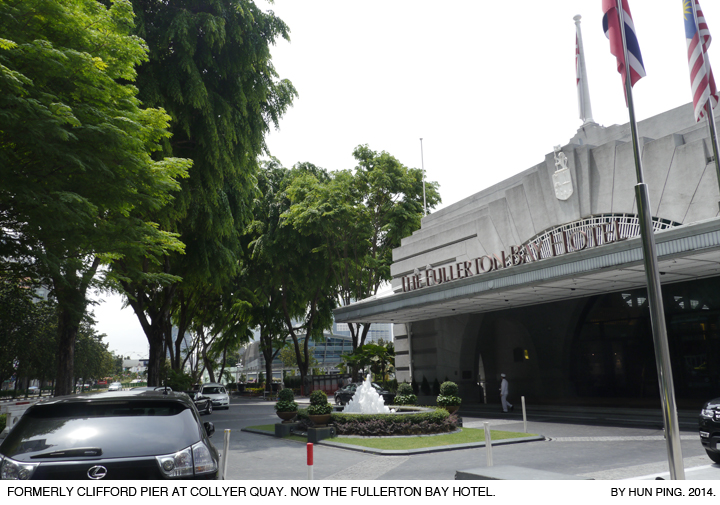
Where Ngok Ming’s and Ah-gau’s offices are situated. Where So-ching is in tears after she is chased out of her husband Ah-Gau’s office. Today, the twenty-storey Art-Deco skyscraper is dwarfed by its taller neighbors and ‘adaptively reused’ as high-end serviced apartments (Ascott Raffles Place).
After being rejected by her husband, So-ching walks in despair along South Bridge Road, crosses Singapore River on Elgin Bridge onto North Bridge Road and is knocked down by none other than the car of her husband’s new-found-fiancee. The iconic Elgin Bridge is still extant today, but the North Bridge Road as featured in the film has changed almost beyond recognition. The only discernible landmark is the spire of St Andrew’s Cathedral. The shophouses that lined the road and the well-known ‘Aurora Department Store’ at the junction of North Bridge Road and High Street were all demolished. Before the emergence of Orchard Road, this area was one of the prime shopping districts in Singapore. Today, one will find instead the new Supreme Court and new Parliament House at the same road junction.
Left: Where Choi-lin is driving en-route to their plantation home in Johor and met with a road accident. One would expect a driver departing the city centre to use Bukit Timah Road-Woodlands Road to reach the Causeway and cross into Johor in the 1950s, a time before the Bukit Timah Expressway exists. The road and some of the shophouses in the film-still are still around today. Right: Where Choi-lin was admitted after the road accident. The wings of the Bowyer Block were torn down in 1985 to make way for new developments. The remaining clock tower and the portico have been preserved and designated a national monument. Today, the remnants of the Bowyer Block serve as a museum.
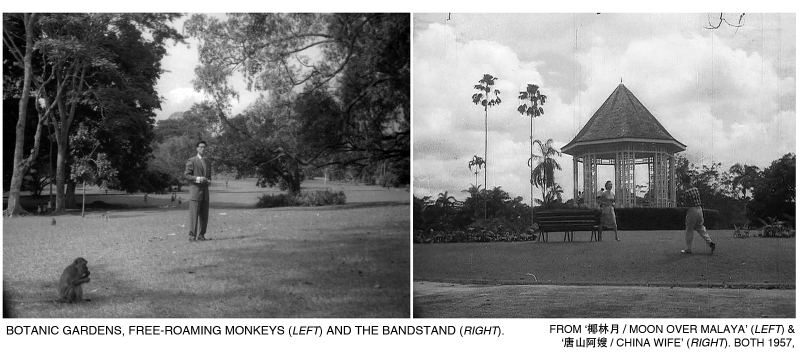 Left: Where Ngok Ming awaits the arrival of her daughter. The long-tailed macaques are absent from the grounds of the gardens today, partly as a result of culling (shooting) by the authorities in the 1970s. The notorious monkeys were deemed to be a “dangerous nuisance”. Right: Where Ah-gau and his fiancée-to-be goes on a date. Built in the 1930s, this octagonal gazebo used to stage evening performances by military bands.
Left: Where Ngok Ming awaits the arrival of her daughter. The long-tailed macaques are absent from the grounds of the gardens today, partly as a result of culling (shooting) by the authorities in the 1970s. The notorious monkeys were deemed to be a “dangerous nuisance”. Right: Where Ah-gau and his fiancée-to-be goes on a date. Built in the 1930s, this octagonal gazebo used to stage evening performances by military bands.
Where Ngok Ming, his daughter and sister-in-law Choi-bing seek entertainment. The Great World Amusement Park in River Valley closed down in 1978 and was demolished to make way for a new shopping mall and high-rise serviced apartments. The Cathay Building opened in 1939, survived the war, but not the inevitable redevelopment after the turn of the century. A new ‘incarnation’ known as ‘The Cathay’, spotting the original art-deco façade, now sits on the site.
Where the trio enjoys refreshments and desserts by the seafront. Established in 1906, the old Sea View Hotel at Tanjong Katong was one of the most popular seaside resorts in Singapore before it was torn down in 1962, to be replaced by a new condominium and housing estate (Peach Garden) in the 1970s.
Where Ah-gau accompanies Ming-chu for shopping. Where she is robbed and he sustains an injury while recovering her necklace from the armed perpetrator. The Robinson at Raffles Place was gutted in a huge fire in 1972. Since the 1980s, Raffles Place also underwent an almost complete transformation – an underground MRT station; new office skyscrapers and modern shopping malls in place of the near-century-old colonial-era buildings.
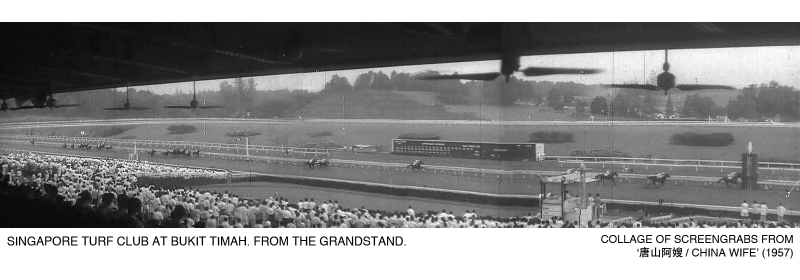 Ah-gau, a gambling addict, phones his ‘bookie’ to make a bet on a horse race at the turf club. Opened in 1933, the Singapore Turf Club at Bukit Timah relocated to Kranji in 2000 following redevelopment plans. However, the grandstand and the racing grounds have been kept relatively intact until today, and now function as a shopping mall and playing fields for outdoor sports respectively.
Ah-gau, a gambling addict, phones his ‘bookie’ to make a bet on a horse race at the turf club. Opened in 1933, the Singapore Turf Club at Bukit Timah relocated to Kranji in 2000 following redevelopment plans. However, the grandstand and the racing grounds have been kept relatively intact until today, and now function as a shopping mall and playing fields for outdoor sports respectively.
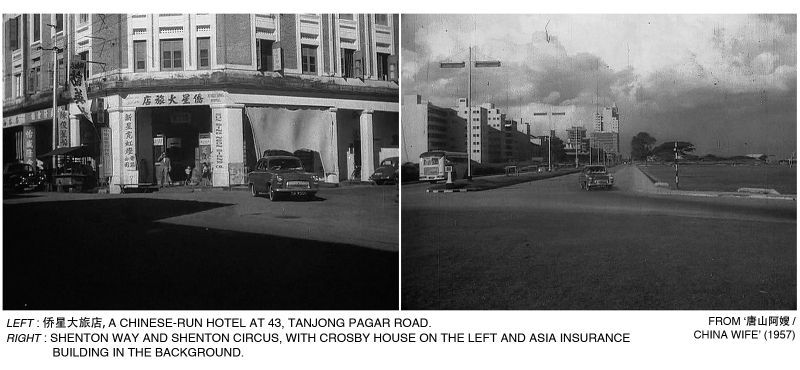 Left: Where So-ching and her son stay while they are in Singapore. Where they are later deceived into abduction, and driven off by a gang of crooks. The block of colonial-era shophouses along Tanjong Pagar Road between Murray Street and Cook Street has been preserved, and the ground floor of the former hotel is now a bridal shop. Right: Where the crooks, while heading towards Tanjong Pagar Railway Station in a car, reveal to So-ching that she and her son are about to be “sold off” in Kuala Lumpur. The empty Shenton Way depicted in the 1957 film appears vastly different from the crowded and busy one today. Many commercial finance institutions (such as the Development Bank of Singapore) set up their operations there beginning from the 1960s and built numerous brutalist-style skyscrapers that are today in the process of being redeveloped. The old Crosby House has also been demolished and replaced with a new 15-storey office building.
Left: Where So-ching and her son stay while they are in Singapore. Where they are later deceived into abduction, and driven off by a gang of crooks. The block of colonial-era shophouses along Tanjong Pagar Road between Murray Street and Cook Street has been preserved, and the ground floor of the former hotel is now a bridal shop. Right: Where the crooks, while heading towards Tanjong Pagar Railway Station in a car, reveal to So-ching that she and her son are about to be “sold off” in Kuala Lumpur. The empty Shenton Way depicted in the 1957 film appears vastly different from the crowded and busy one today. Many commercial finance institutions (such as the Development Bank of Singapore) set up their operations there beginning from the 1960s and built numerous brutalist-style skyscrapers that are today in the process of being redeveloped. The old Crosby House has also been demolished and replaced with a new 15-storey office building.
Where Ah-gau is released from prison, after a two-year internment. Built in 1936 by the British colonialists, this old Changi Prison was used as a Prisoners-of-War camp during the Japanese Occupation. The prison complex was demolished in the 2000s, while the old prison gates and a section of the main wall were preserved and transplanted to the prison’s new location in a neighboring site.
The Causeway, Railways and Bridges. Malaya and Merdeka.
Though Moon Over Malaya is set mainly in the island of Singapore, this ‘crown colony of the British empire’ is seldom perceived or presented in isolation from its geographical context in the film diegesis. Ngok Ming and his peers’ network of Chinese girls’ schools in Malaya developed from Singapore as a base. Ngok Ming’s capitalist father-in-law has businesses spread over the Malayan Peninsula – eg. rubber plantations in Johor and tin mines in Ipoh. Ngok Ming and Choi-lin’s love affair developed in the course of their overland travels from Singapore up north to mainland Malaya, during a sequence in the film where audiences are treated to a lengthy plethora of tourist sights in Johor Bahru, Malacca, Kuala Lumpur, Penang and Perak. The characters in China Wife too, shuttle back and forth between Singapore, Ipoh and Kuala Lumpur – between the foremost port city and the tin mines in the Malayan hinterland – to look for work and, in So-ching’s case, to search for the missing spouse.
Indeed, throughout history, prior to her independence as a sovereign nation in 1965, Singapore was often identified as an inseparable part of Malaya. During the 16th century, Singapore (or Singapura) was part of the Sultanate of Johor, which controlled the southern parts of the Malay Peninsula, and the Riau-Lingga islands. In the colonial era, Singapore was the capital of the Straits Settlements (Singapore, Malacca & Penang) from 1867 until the Japanese Occupation. After the war, the British colonial authorities’ contrivance and the forces of Malay nationalism excluded Singapore from 1946’s Malayan Union and subsequently, the Federation of Malaya (though Penang and Malacca were included). Many residents in Singapore, including the Malays and Chinese, had familial roots in Malaya. Malaya-born residents had chosen to live and work in Singapore, then one of the most vibrant cities in Southeast Asia. A Malayan consciousness was also fast taking root in Singapore’s Chinese community (the majority of the population), especially after the communist victory in China in 1949 and the Bandung Conference of 1955 — it was during this meeting of Asian and African states that the People’s Republic of China declared that it encouraged the voluntary expatriation or the return of overseas Chinese; dual citizenship was not allowed.) — and contacts with China were progressively cut as a result of the Cold War. Political leaders of the 1950s, like David Marshall and Lee Kuan Yew, had envisioned Singapore’s eventual merger with the Federation of Malaya as a single political entity. The Malayan Peninsula was to be become more significant as an economic and cultural hinterland for cosmopolitan Singapore.
The close ties between Singapore and mainland Malaya had found symbolic physical expression in the building and completion of the Woodlands – Johor Bahru Causeway in 1923, a land bridge that spanned the Johor or Tebrau Straits. It made efficient the transportation of economic goods, travelers and mail between the island-port and the mainland, on the railway line that already had connections to the northern reaches of British Malaya. The Causeway held such significance that the Argyll and Sutherland Highlanders of the British Army felt compelled to march ceremoniously across the causeway playing military bag-pipes, right before they blew it up on 31 January 1942 to stem the advance of the Imperial Japanese Army from the north.
History in the real world aside, the Causeway found a place in the narrative of Moon Over Malaya when Choi-lin and Ngok Ming drove from Singapore Woodlands across the Causeway to Johor Bahru where they began their ‘pilgrimage’ in mainland (Federation of) Malaya – a symbolic entry into the hinterland. It was a border-causeway that they passed through with relative ease in 1956, as opposed to the prolonged passage through the series of immigration, customs, security and quarantine controls (and traffic jams) progressively built up of on both ends of the Causeway in more recent times.
Where Ngok Ming and Choi-lin enter mainland Malaya from Singapore for a tour of the peninsula, the hinterland. This was the Woodlands end of the causeway, with the Woodlands Police Station on the extreme left in the film-stills collage above. The relatively empty road is in marked difference to the massive customs complexes and traffic congestion that one will encounter in the same location today.
The Causeway did not feature as a film location in China Wife, but a substantial section of the film is dedicated to the rail network that bound Singapore to its Malayan hinterland – the ‘Malayan Railway’, the predecessor to ‘Keretapi Tanah Melayu (KTM)’. Instead of a tourist pilgrimage to Malaya, China Wife offers to its audience a gripping chase scene up the Malayan peninsula – of Ah-gau and company in a car, pursuing his wife So-ching and her abductors in a Kuala-Lumpur-bound ‘Malayan Railway’ train from Tanjong Pagar Station in Singapore.
Since July 2011, KTM train services between Woodlands and Tanjong Pagar have ceased. Dubbed the ‘Rail Corridor’ today, the land on which these train stations and truss bridges sit on were once owned by Malaysia’s KTMB (Keretapi Tanah Melayu Berhad) and handed over to the Singapore government following bilateral negotiations and agreements. Almost all the former Malayan Railway installations as featured in the film have been conserved or retained in recent times.
Singapore in 1956/57, when Moon Over Malaya and China Wife were filmed, was on the cusp of being granted internal self-governance. On the back of his ‘success’ in quelling anti-imperial and left-wing-inspired civil unrest in October 1956, Chief Minister Lim Yew Hock would find favor with the British colonial authorities in London and achieve a breakthrough in constitutional talks in March 1957 for Singapore to become a self-governing state, with the British sharing decisions over internal security, but retaining full control of defence and external affairs. The talks were dubbed the Merdeka Talks (Merdeka is Malay for ‘independence’).
“Merdeka” was on the lips of many hopeful politicians in the 1950s and was tagged to many events or things that had (passing) associations with aspirations for Singapore/Malaya’s independence from colonial rule. Chief Minister David Marshall had initiated a Merdeka Week in March 1956 to coincide with a visit by British parliamentarians to assess Singapore’s prospects for independence. The week-long festivities culminated in a Merdeka Rally at the former Kallang Airport, where an estimated crowd of 25,000 people attended (and turned riotous). A stone’s throw away from the old airport, a new bridge over Kallang River that would provide road users quicker access from Katong and Siglap to the city centre was nearing completion and was given the name Merdeka Bridge by Francis Thomas, the Minister for Communications and Works. Chief Minister Lim Yew Hock declared the bridge open on 17 August 1956, to much anticipation and fanfare. A little over three months later, the well-informed production crew of Moon Over Malaya would be selecting the new scenic Merdeka Bridge as a film location for a scene where Ngok Ming, his daughter and sister-in-law Choi-bing had a leisurely stroll at sunset after a day’s outing. The mood of the scene is jovial and almost celebratory. In the narrative, this scene is a precursor to the eventual reconciliation of the conflict between Ngok Ming and his father-in-law – a happy ending. If taken out of the context of the film, the crossing of the bridge in the scene could be read as a symbolic gesture of things to come when Singapore ultimately achieved the new status of internal self-government in 1959.
Where Ngok Ming, his daughter and Choi-bing walked on the bridge’s sidewalk under the glow of the street-lamps at sunset. Behind the bridge in the background, trading tongkangs and bugis schooners were moored along the coast off Beach Road and Nicoll Highway, before further land reclamation in the 1970s forced them to relocate once more. The bridge is still in use today.
Conclusion
Though filmed in a real-world context of political and societal shifts in 1950s Singapore, Moon Over Malaya and China Wife are short on direct and explicit references to the turbulent events and ongoing social transformations of that period. Perhaps, this is not something one should expect from a commercial film production endeavor that is already preoccupied with providing subtle escapism and passing on certain moral messages to its audiences. However, we can infer from the film settings and ‘on-location’ scenes a familiarity with local social conditions and mindsets – the Chinese community’s concern for vernacular education (Chinese middle schools), for their ‘roots’ (dialect and clan associations) and for their businesses (offices and plantations); the places residents frequent and use (leisure and dating spots, the hospital, the harbor, the new Merdeka Bridge); and the consciousness of a Malayan hinterland beyond the island of Singapore (Causeway, Malayan Railway and mainland Malaya). And perhaps the films’ most valuable legacy for contemporary Singapore is as filmic memory of an urban landscape and society from the mid-20th century that have since undergone tremendous changes – revisions in the role of the traditional Chinese clan associations following the enactment of new citizenship laws in 1957 and self-government in 1959, Singapore’s eventual political split from Malaysia in 1965, the conversion of all Chinese-medium schools to English-medium ones by 1987, and the perpetual implementation of large-scale urban renewal and redevelopment.
Note: This article first appeared in the programme booklet of ‘The Story of Kong Ngee’ 光艺的故事, a film programme of the National Museum of Singapore Cinémathèque (10 – 20 October 2013). It is reproduced here with the kind permission of the National Museum of Singapore, with updated information, new photographs and maps.
Further Reading:
1. ‘Oral History Interview with Chan Mun’, The Glorious Modernity of Kong Ngee. Wong Ain-ling (ed.) Hong Kong: Hong Kong Film Archive, 2006.
2. ‘Oral History Interview with Ho Kian-ngiap’, The Glorious Modernity of Kong Ngee. Wong Ain-ling (ed.) Hong Kong: Hong Kong Film Archive, 2006.
3. Hong, Lysa, ‘Politics of the Chinese-speaking Communities in Singapore in the 1950s: The Shaping of Mass Politics’, in The May 13 Generation (p. 88). Tan Jing Quee et al. (ed.) Petaling Jaya: Strategic Information and Research Development Centre, 2011.
4. Lee, Edwin. Singapore: The Unexpected Nation (p. 137), Singapore: ISEAS, 2008.
5. 何思成堂开幕盛况. 南洋商报 (Nanyang Siang Pau). 24 February 1949, p. 6.
Film Images:
© 1957 Kong Ngee Film Company 光艺制片公司
Digital Map Source:
Great Britain. Royal Air Force, Singapore photomap, National Library of Australia, MAP G8041.A4 s6 1950. [http://nla.gov.au/nla.map-vn502375]
Photographs:
© 2012, 2013, 2014 Toh Hun Ping

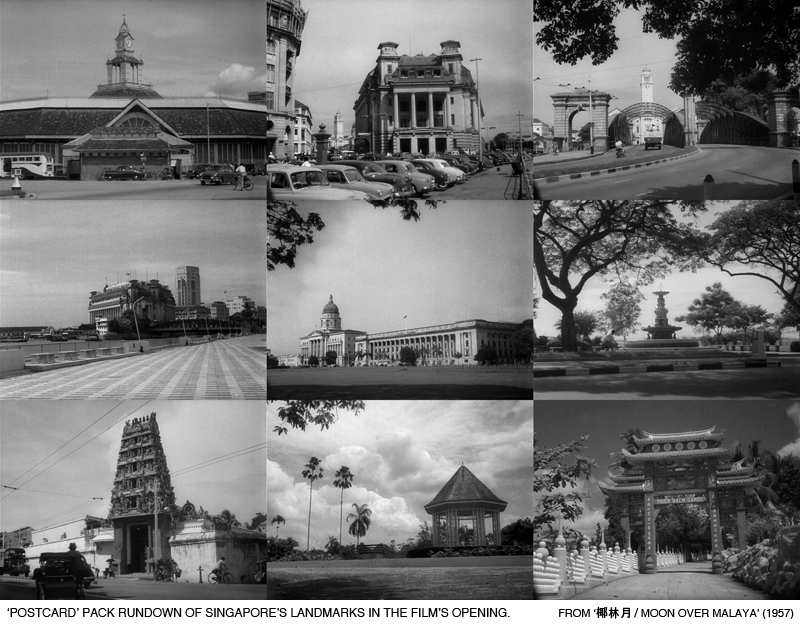
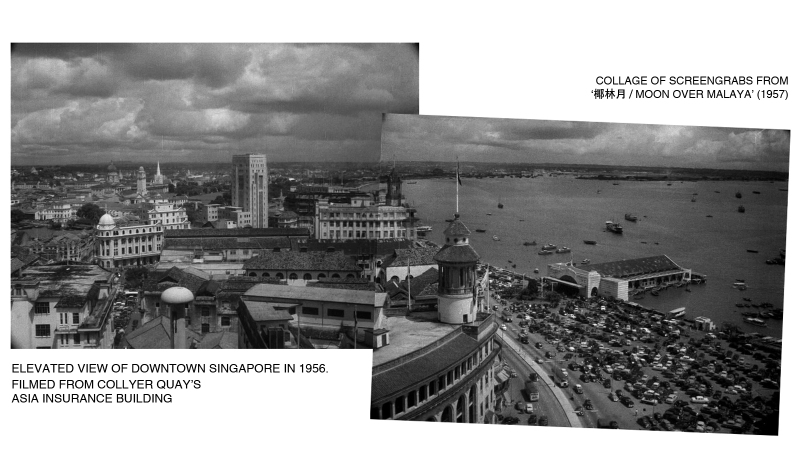
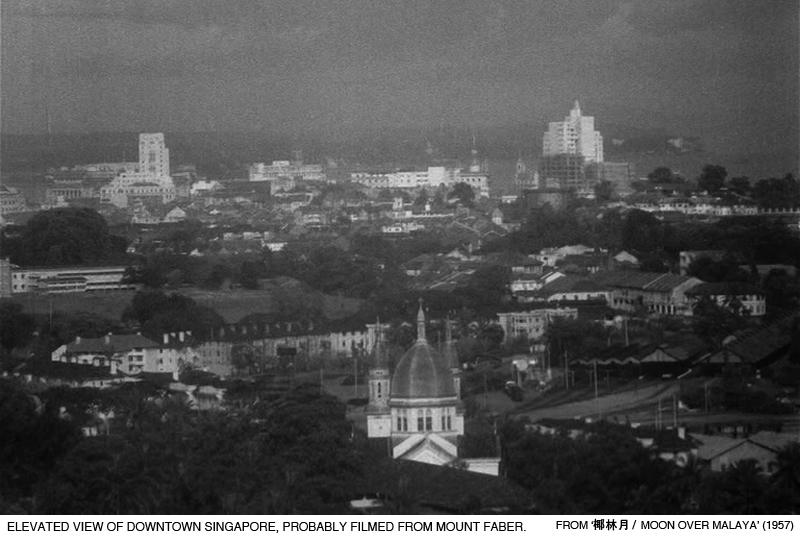
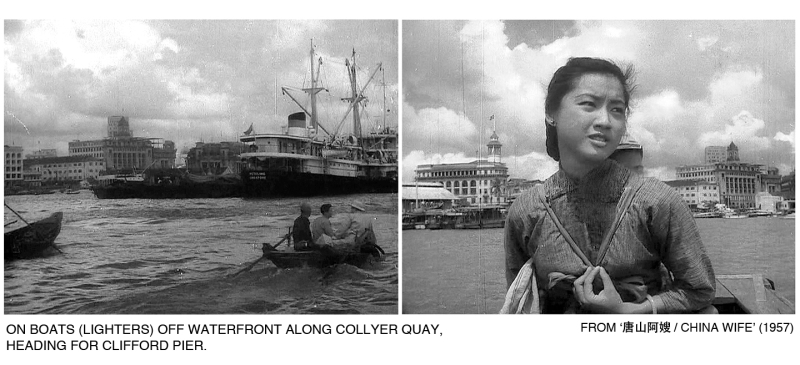
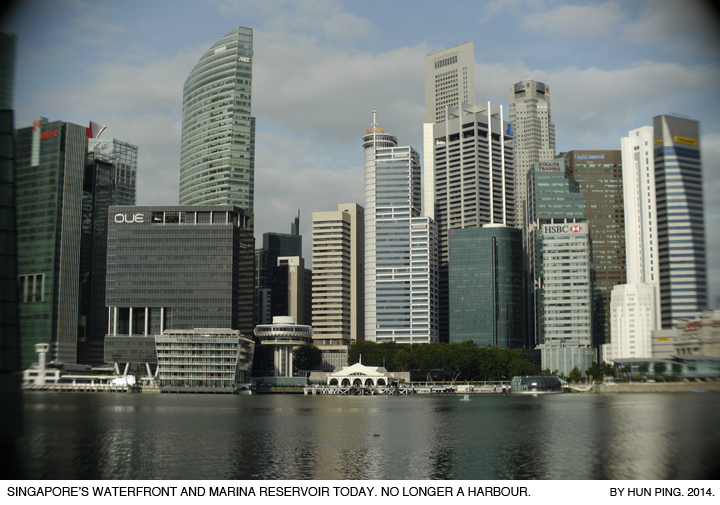


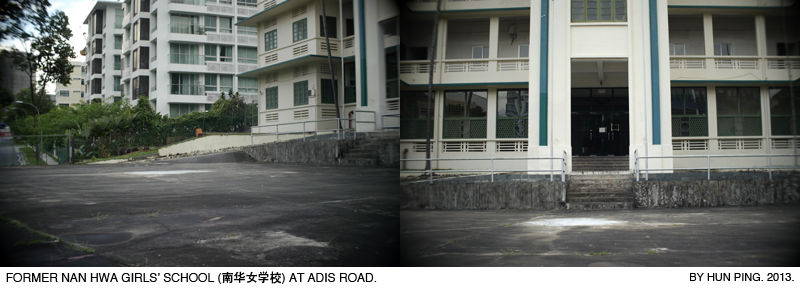
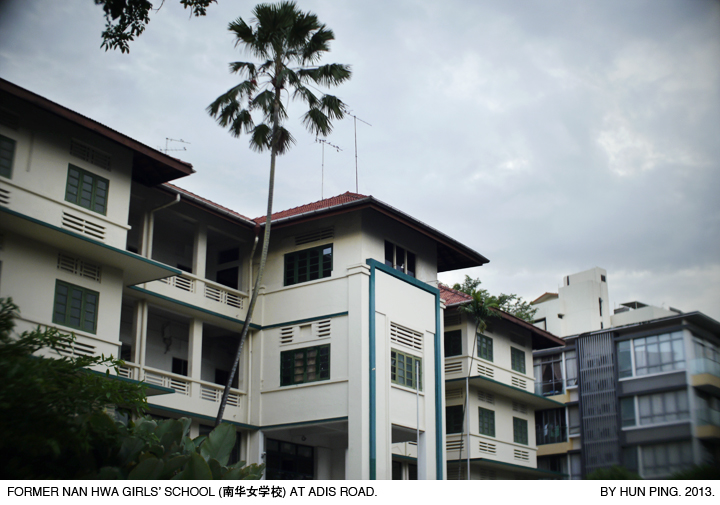
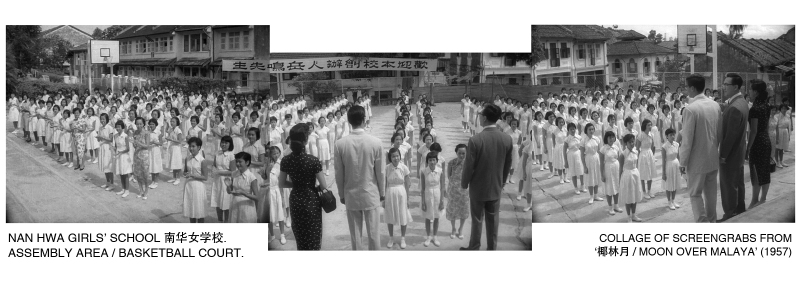
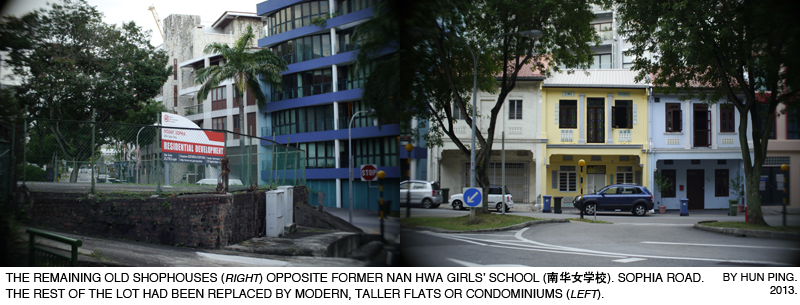
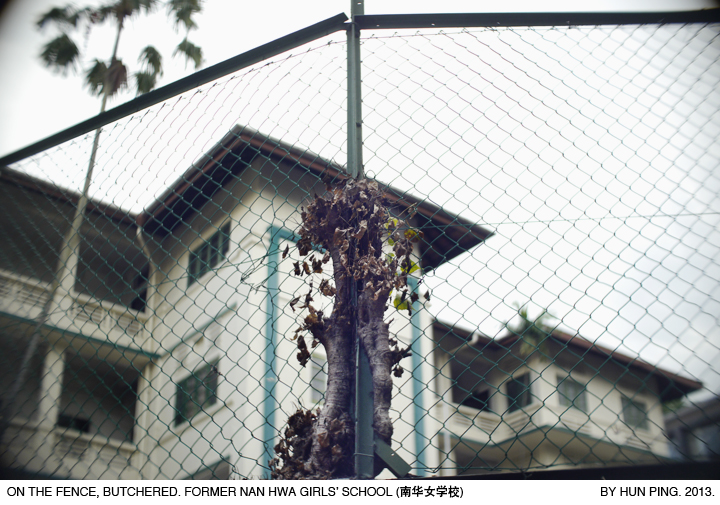
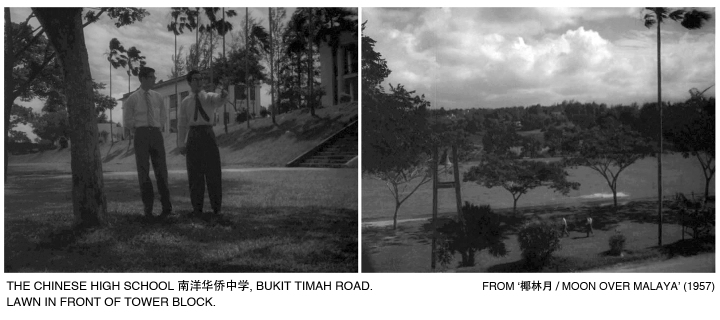
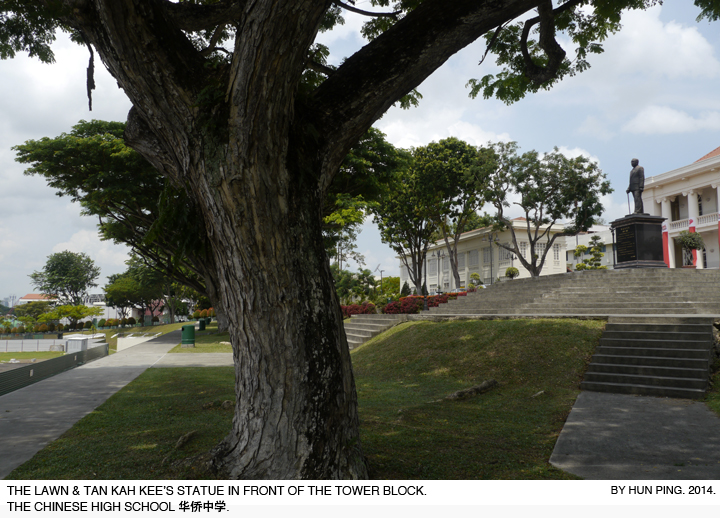
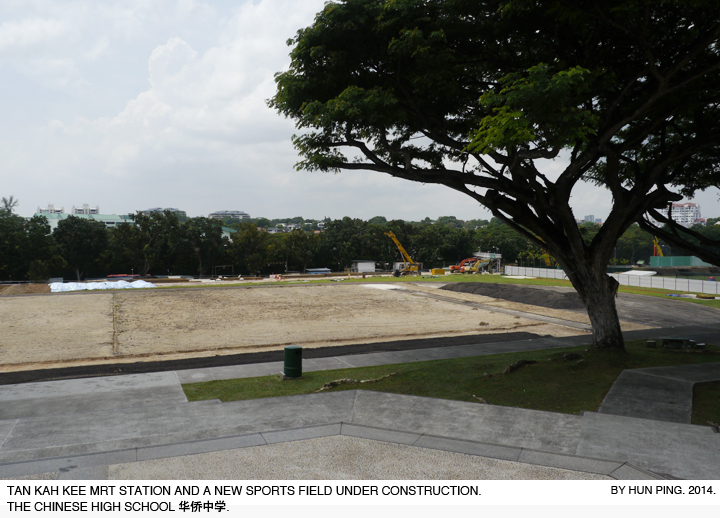
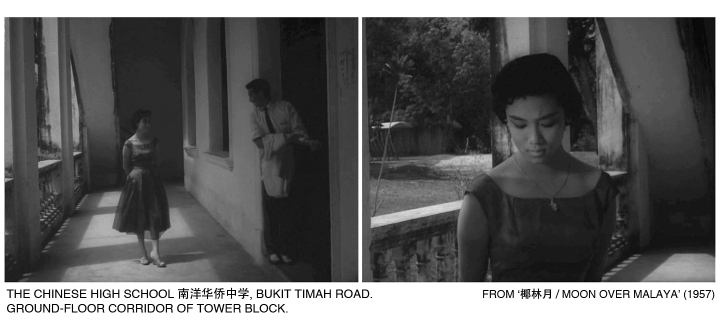

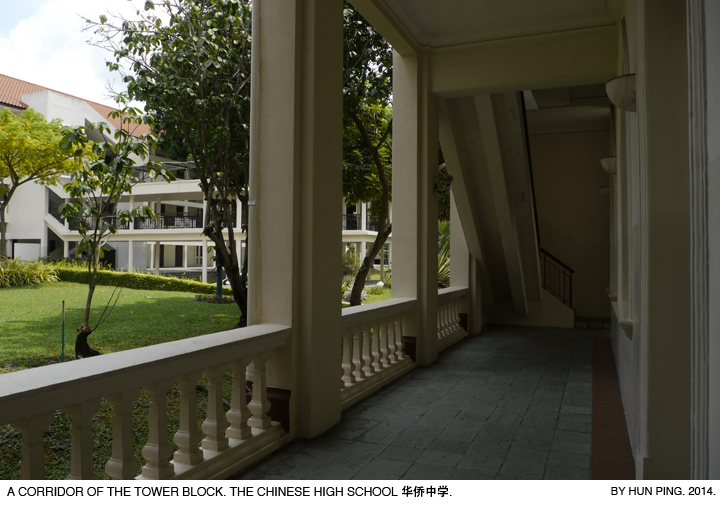
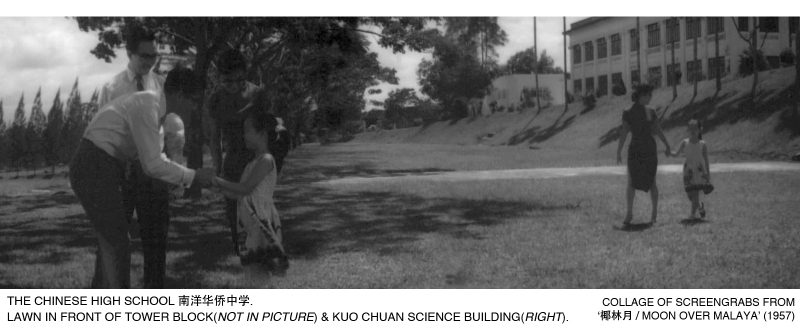

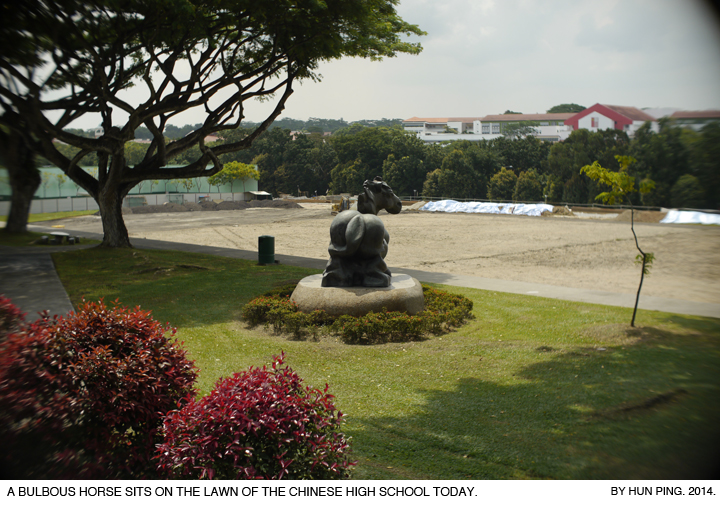
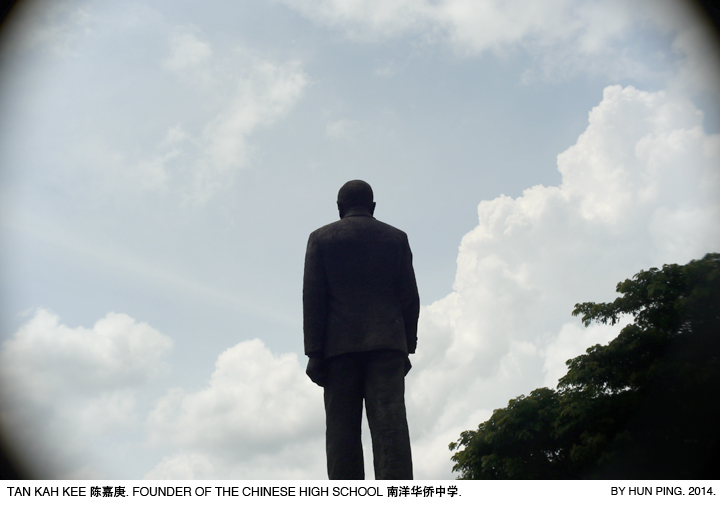
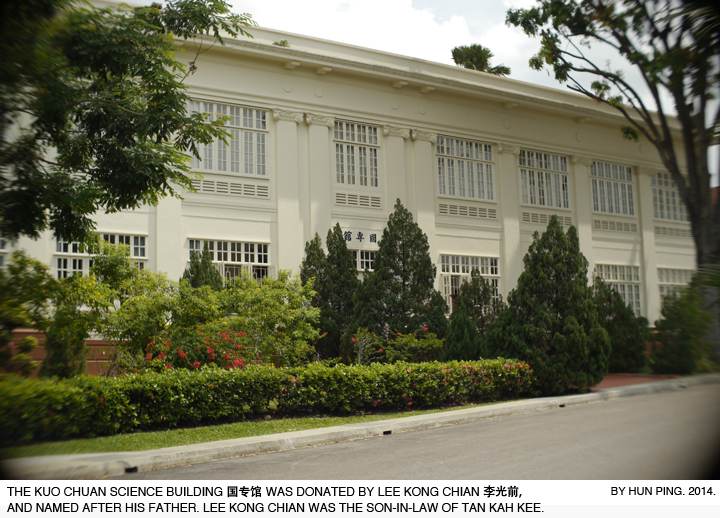
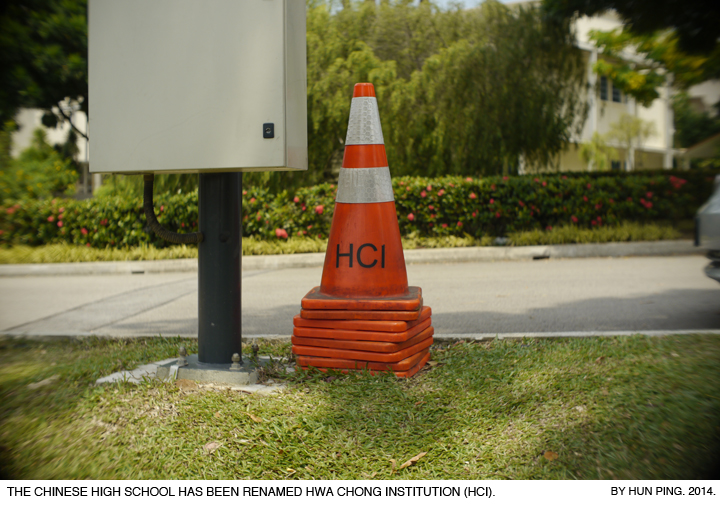
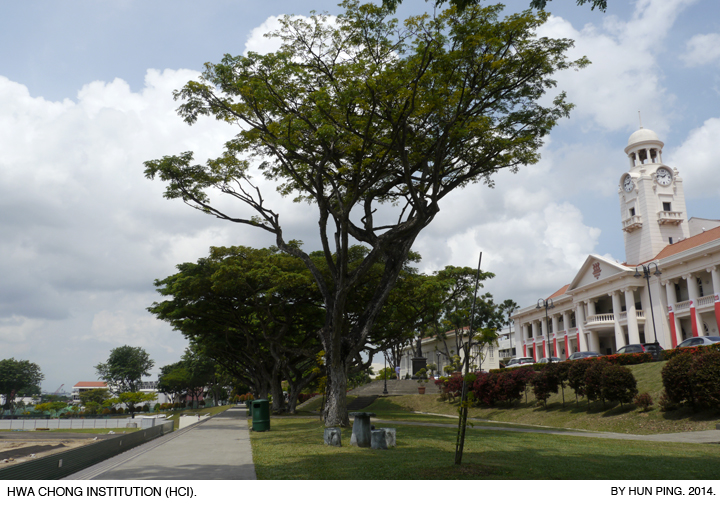
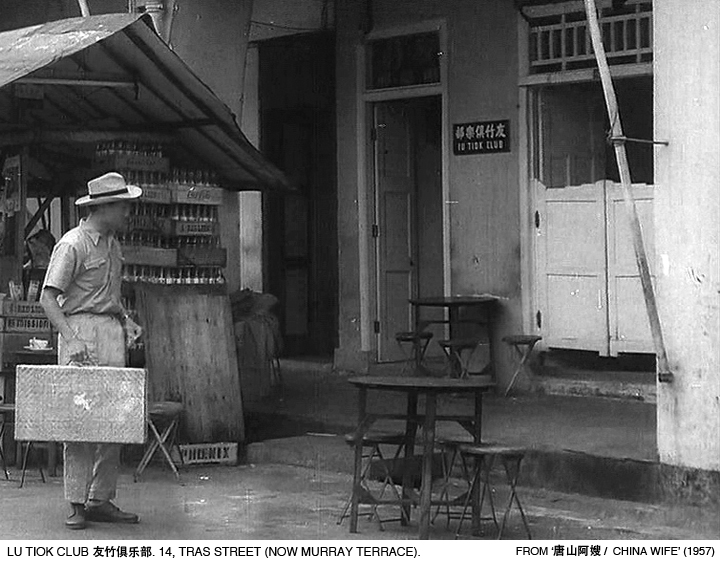
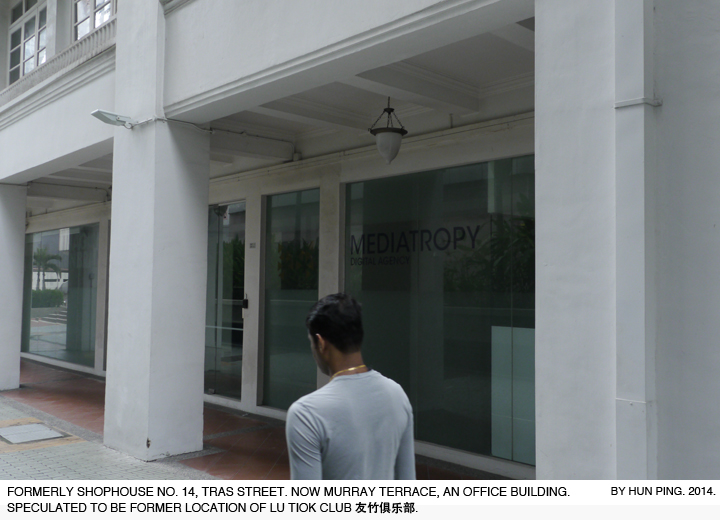
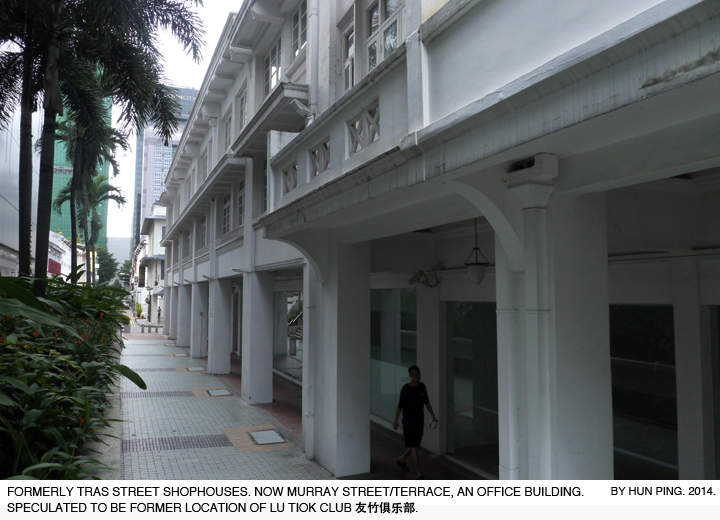
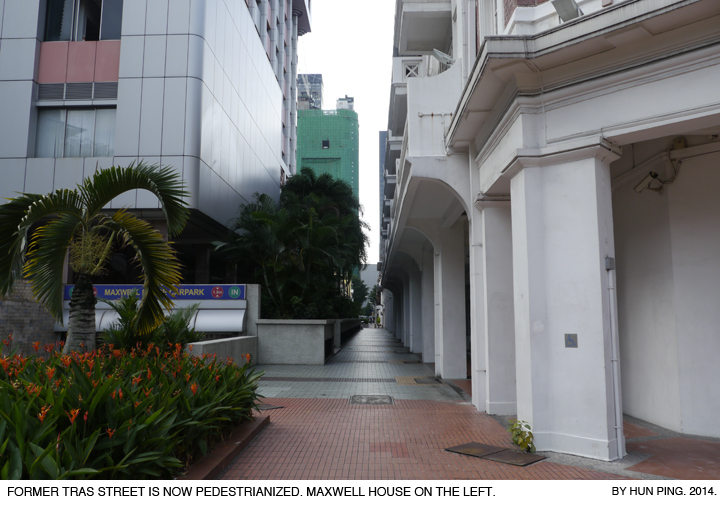
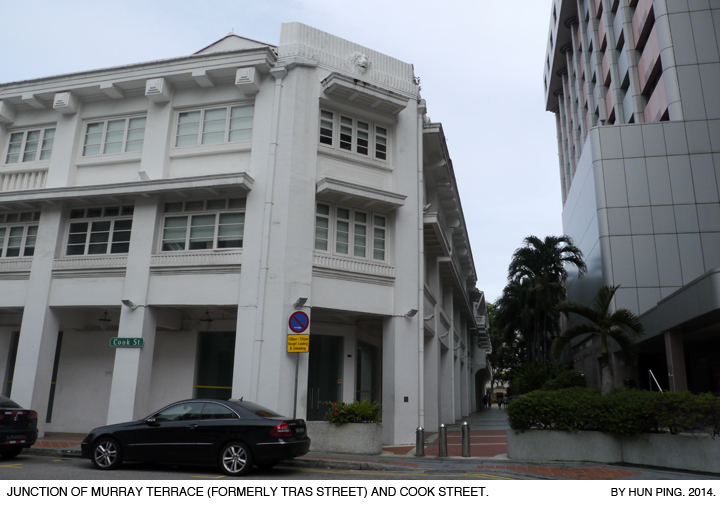

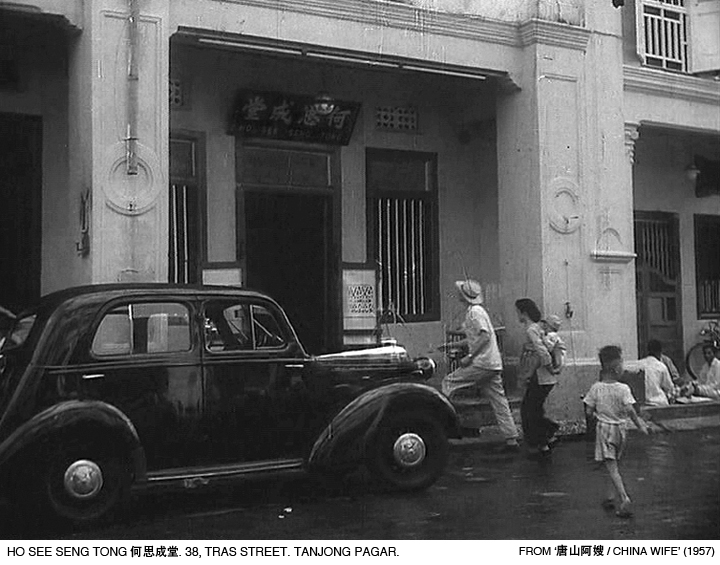
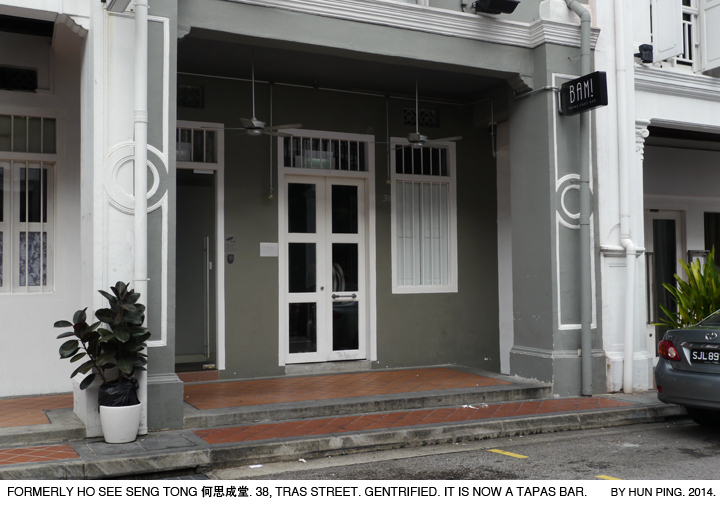

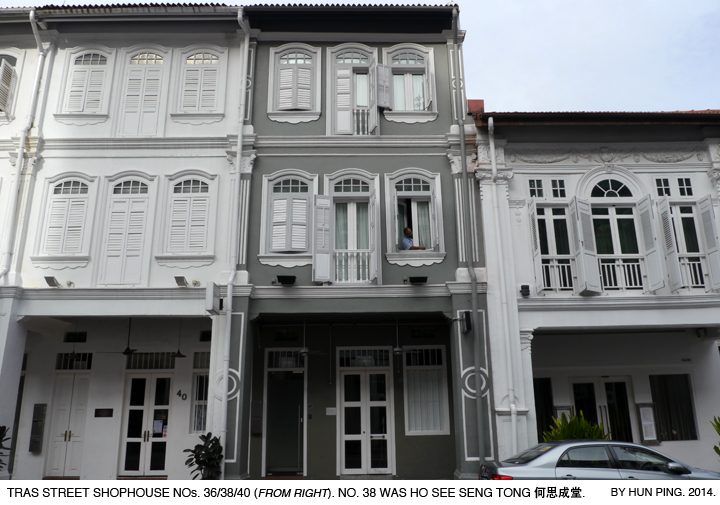
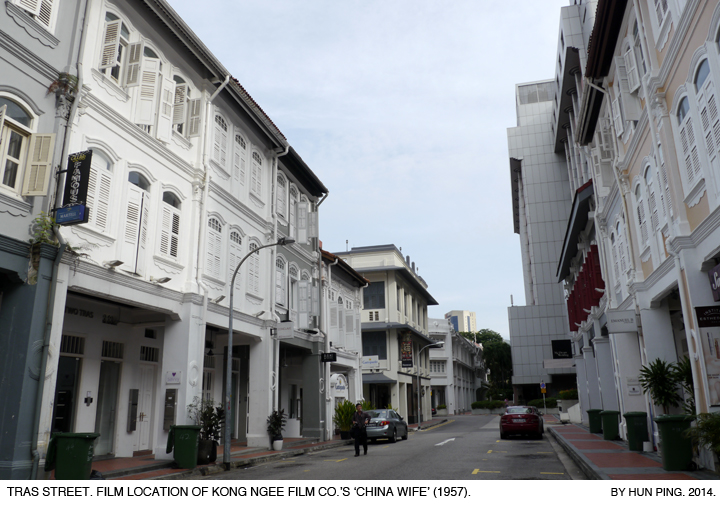
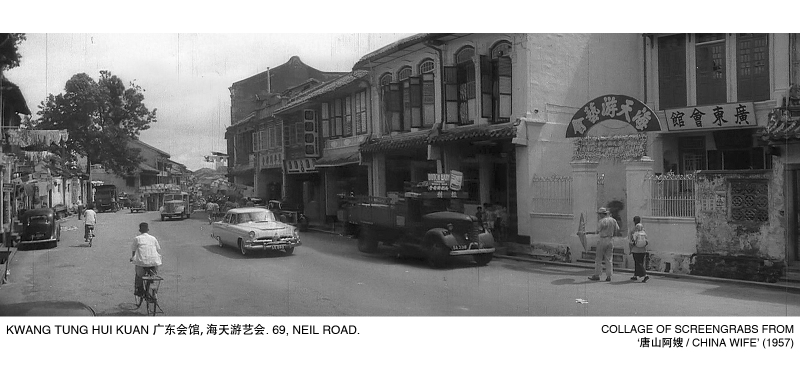
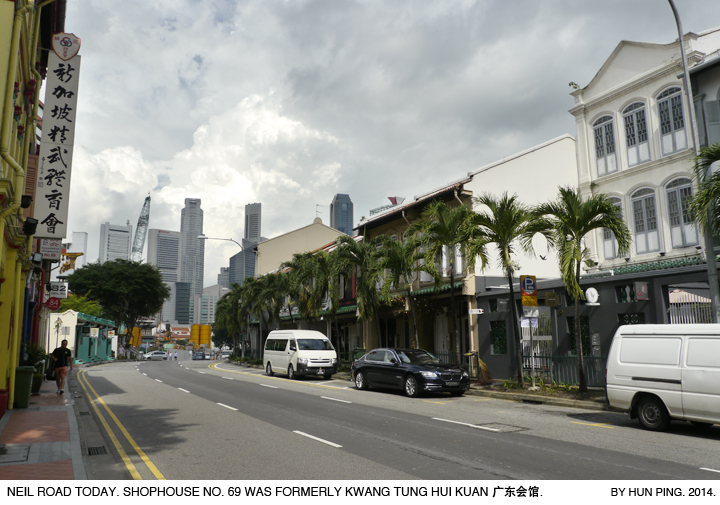
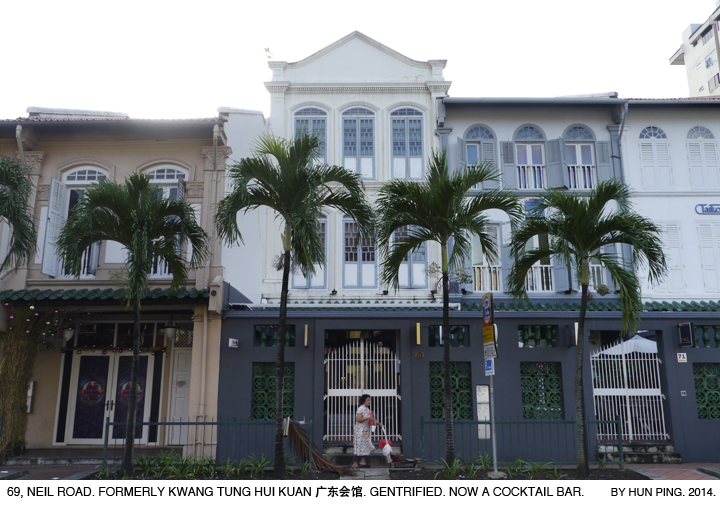
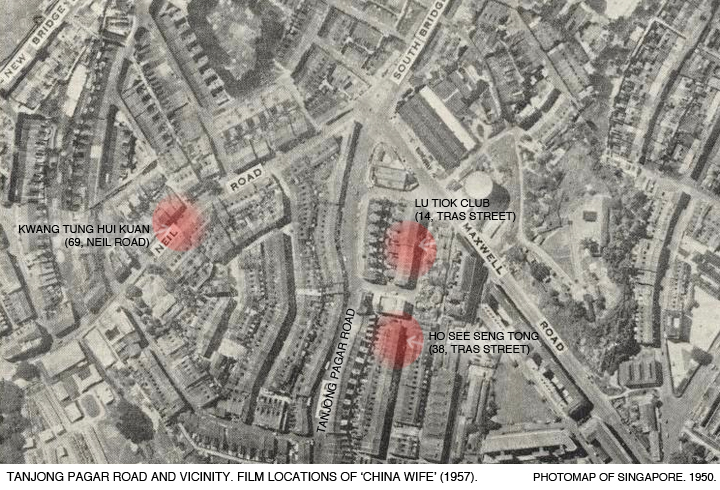
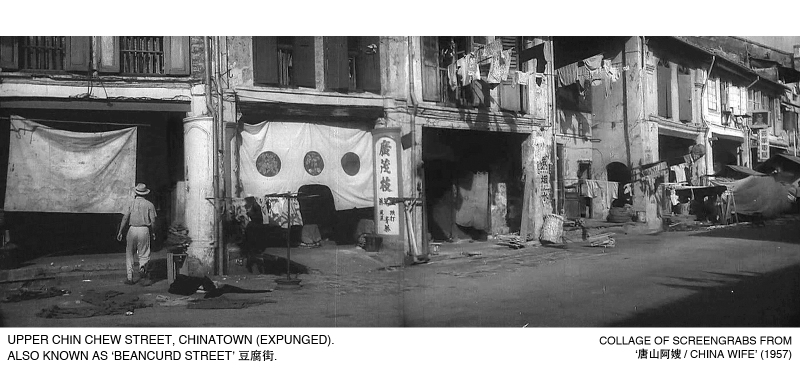
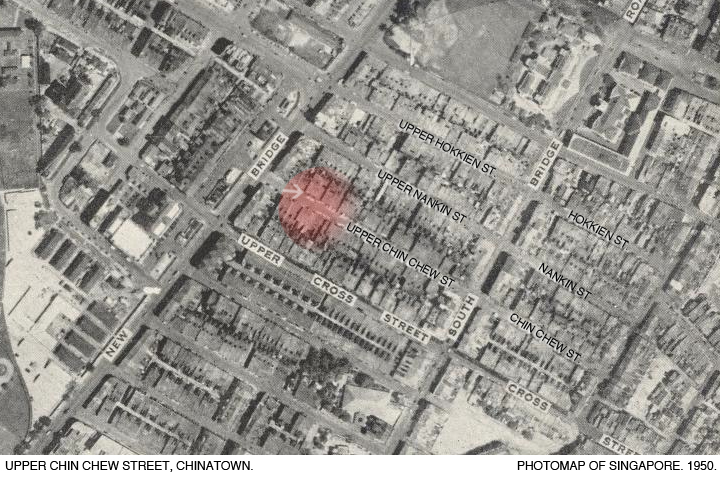
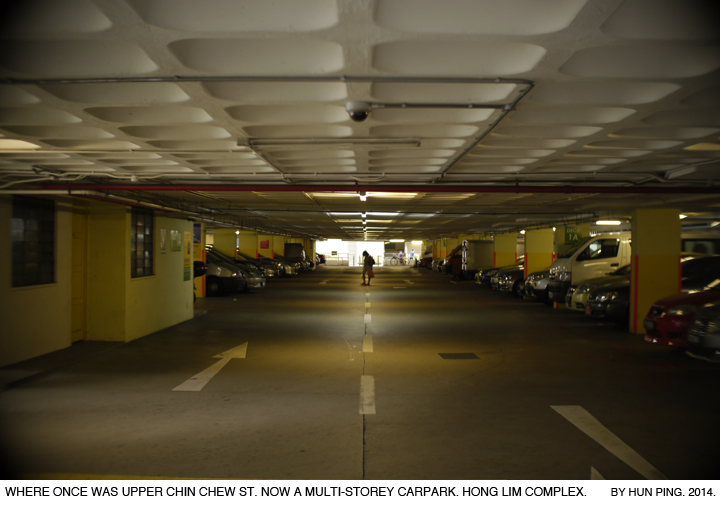
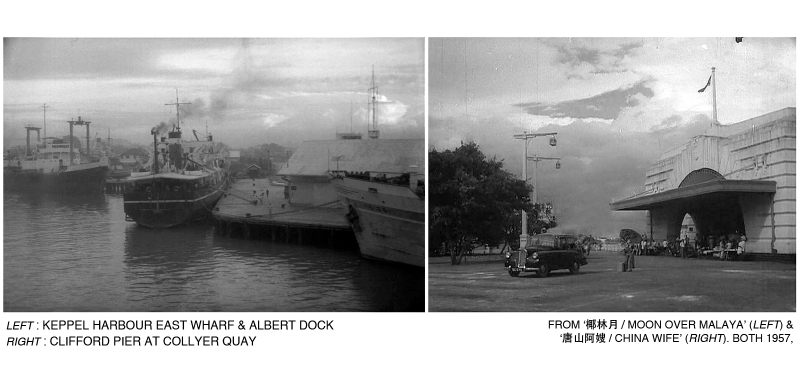
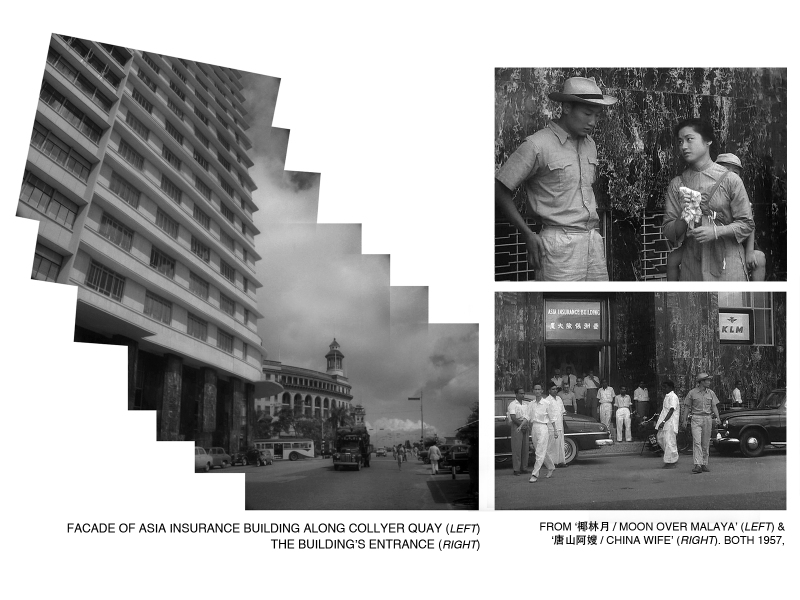
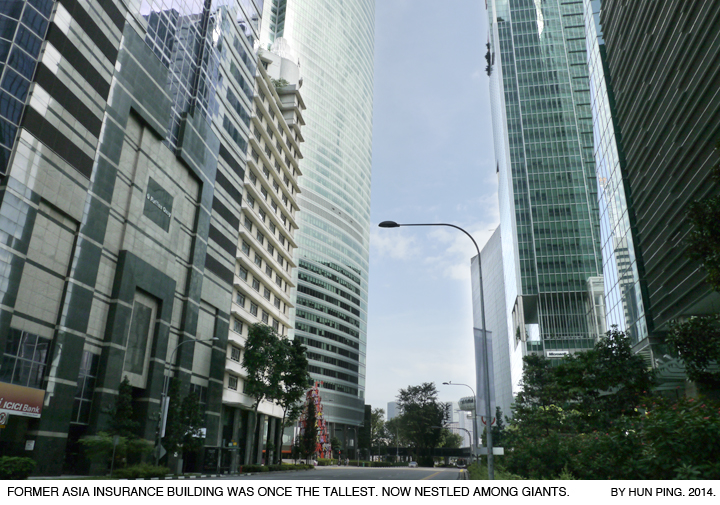
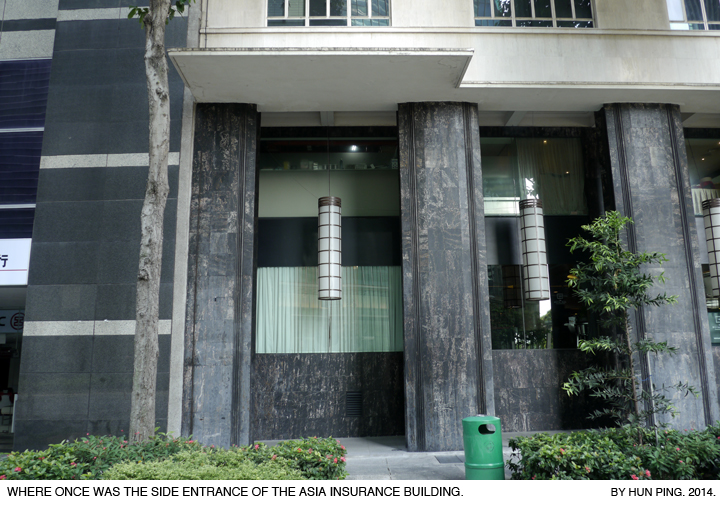
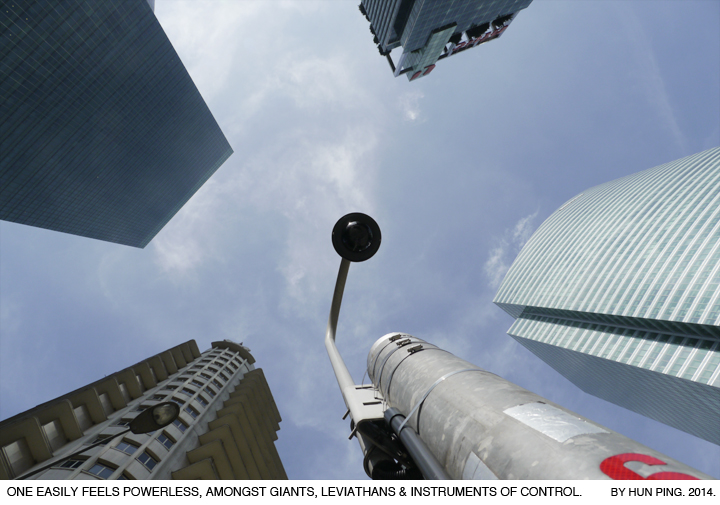
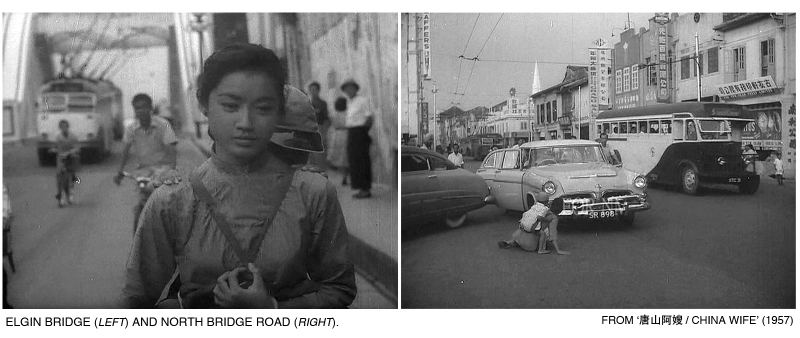
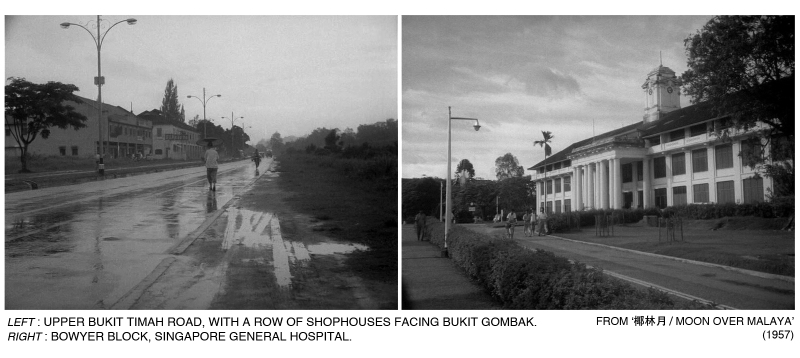
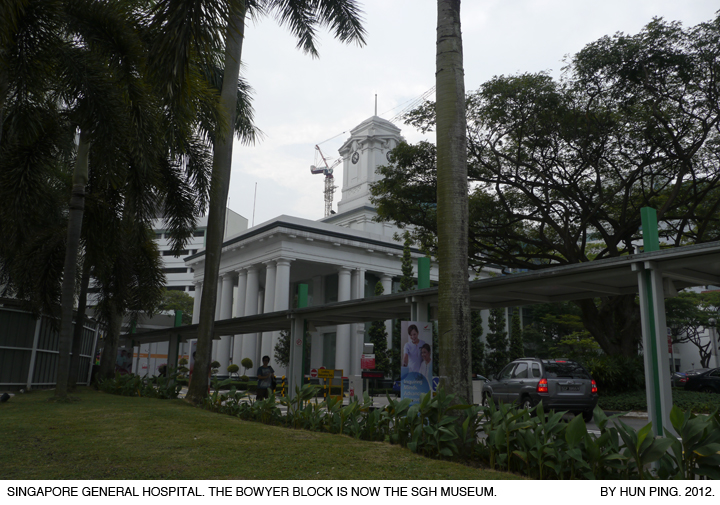
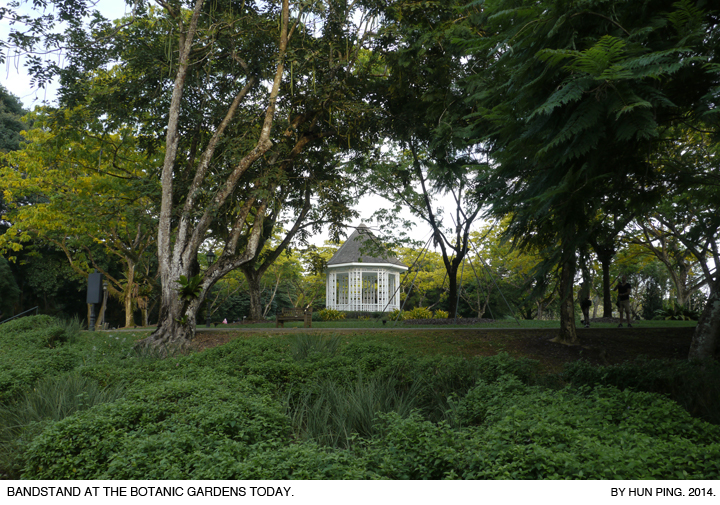

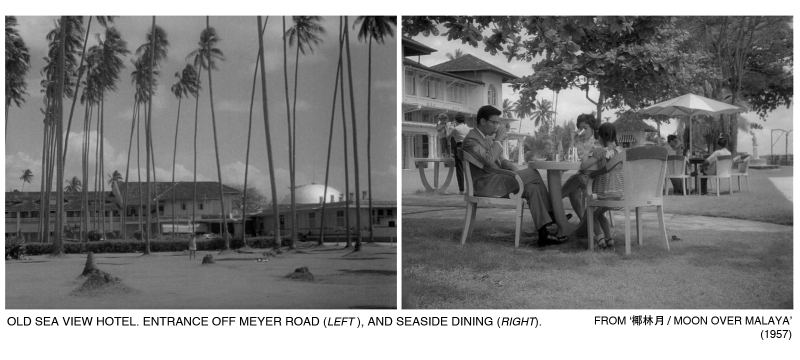
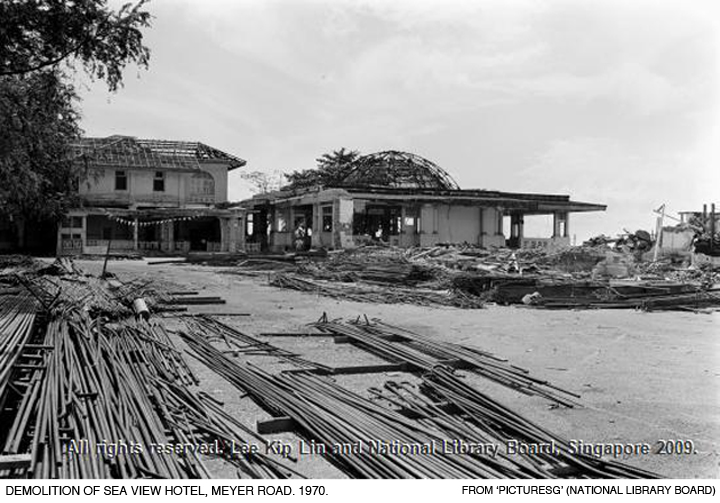
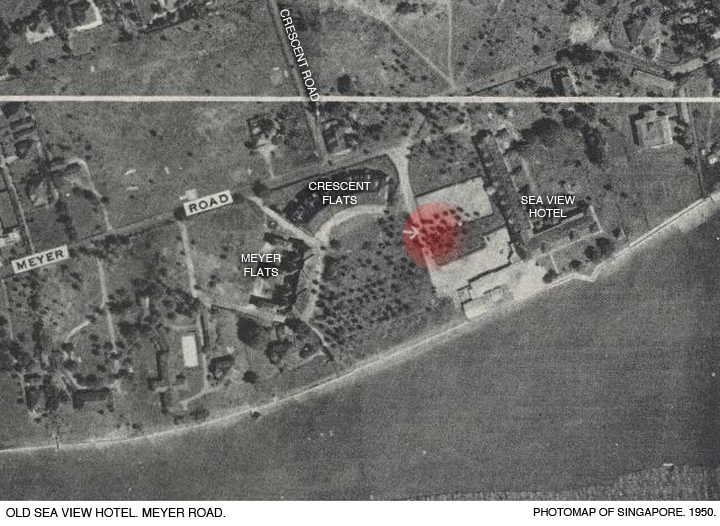
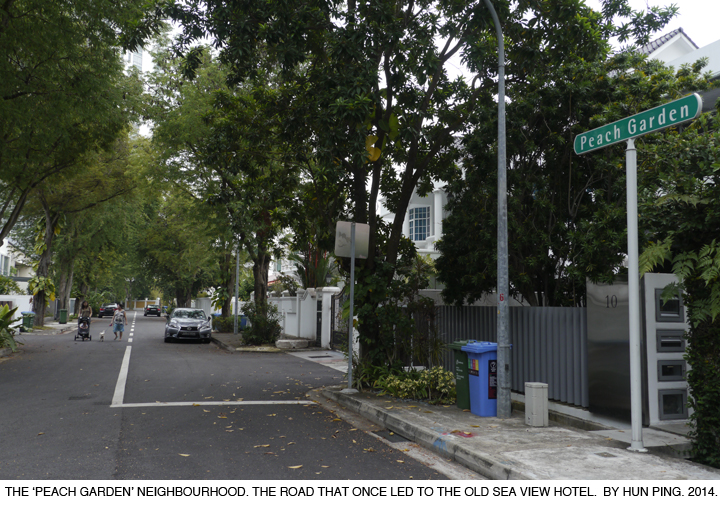
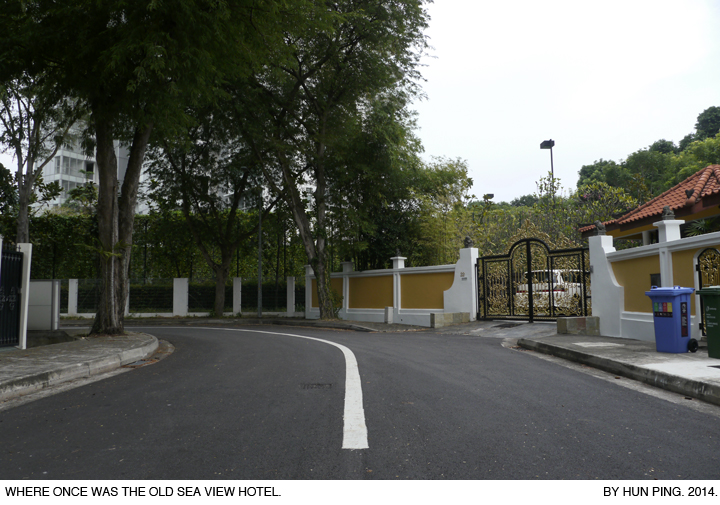

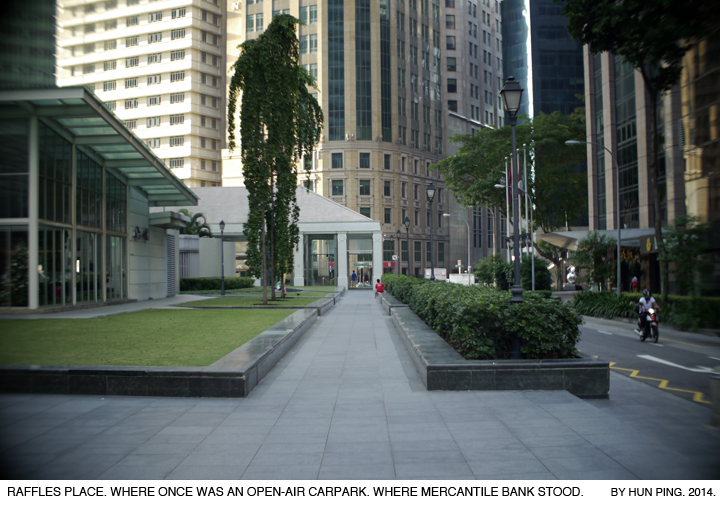
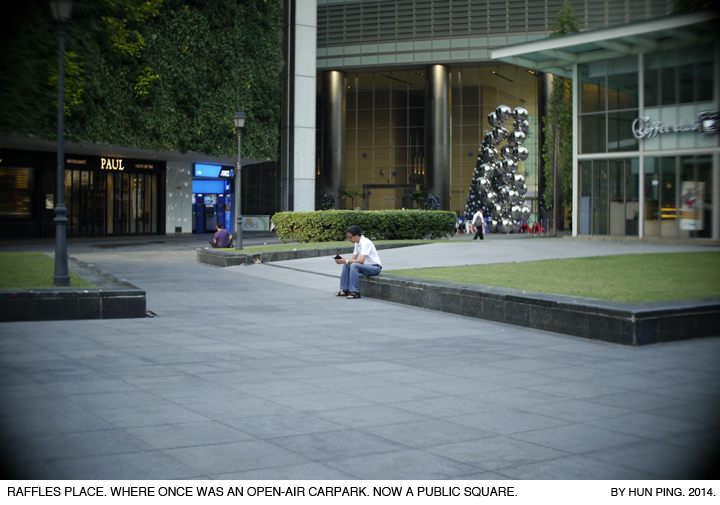

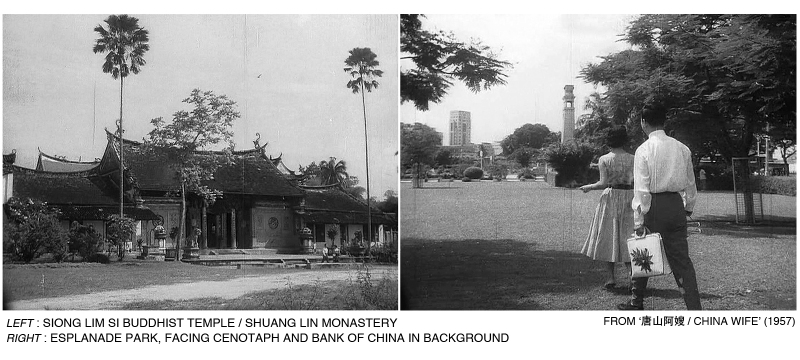
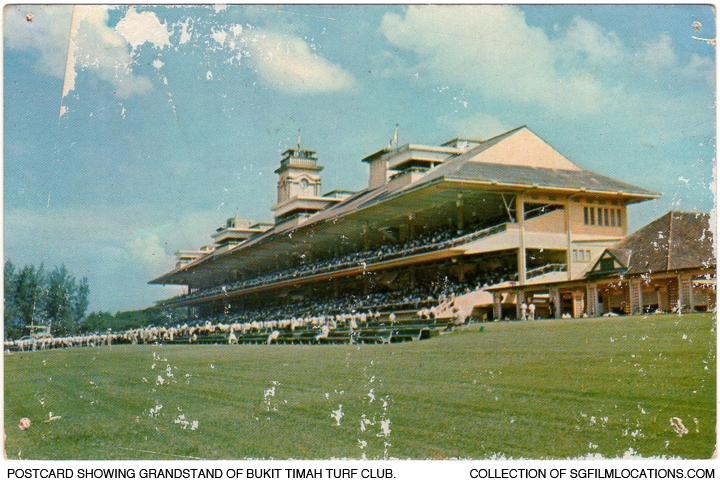
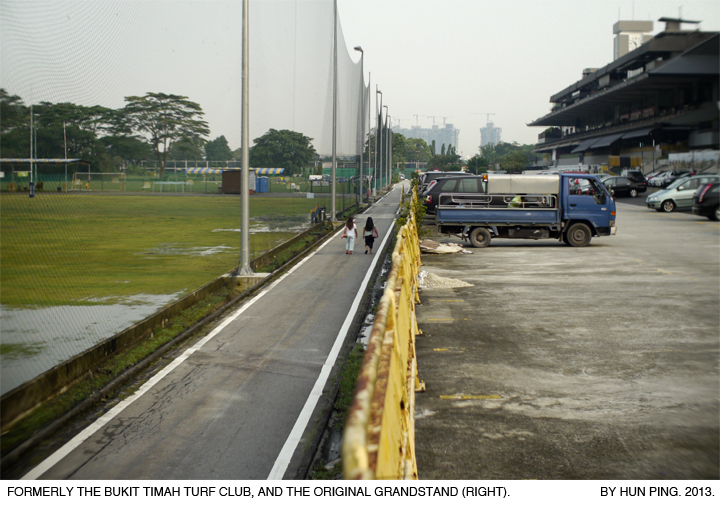
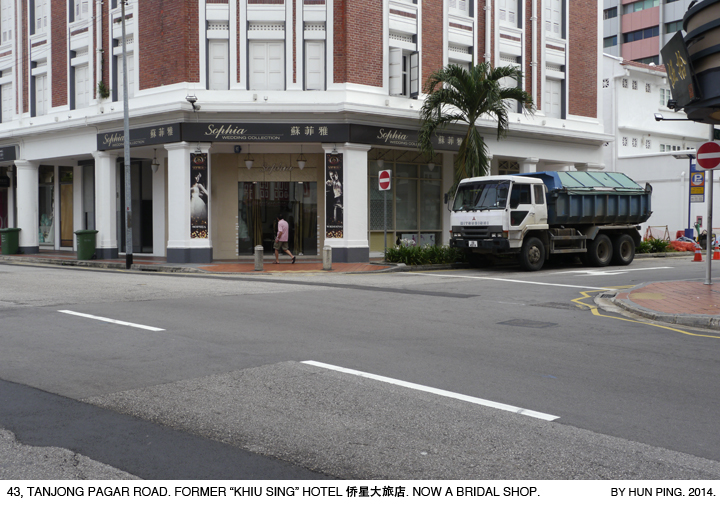

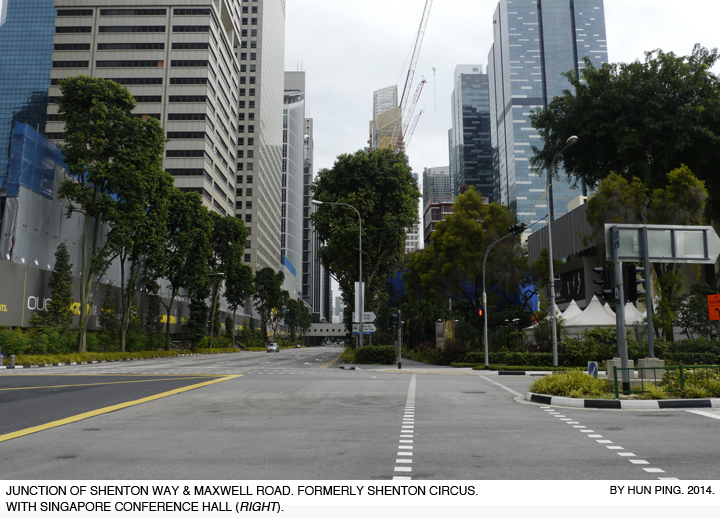
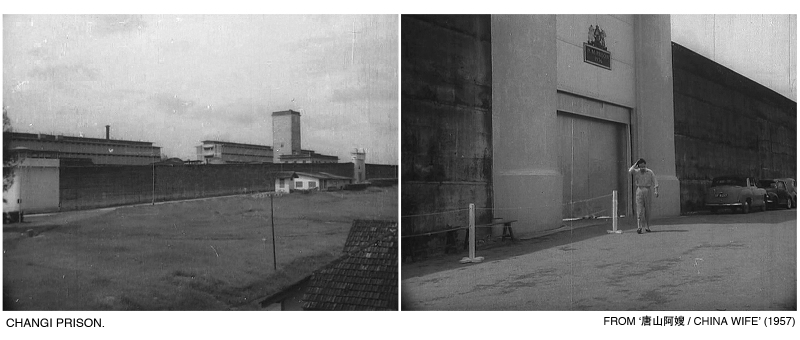
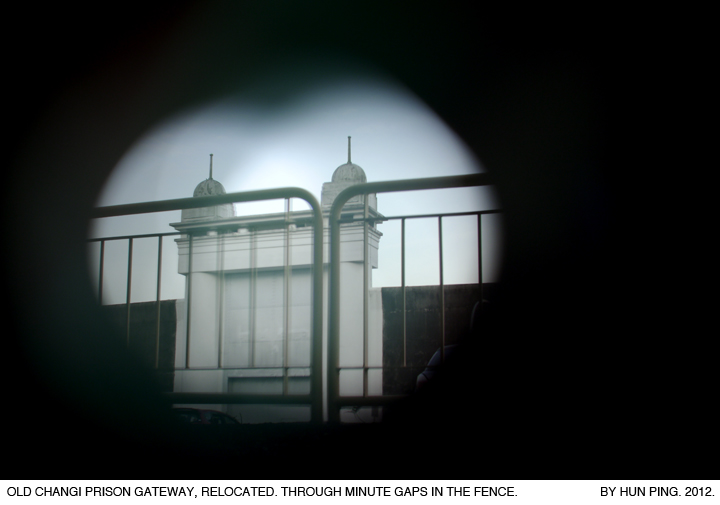

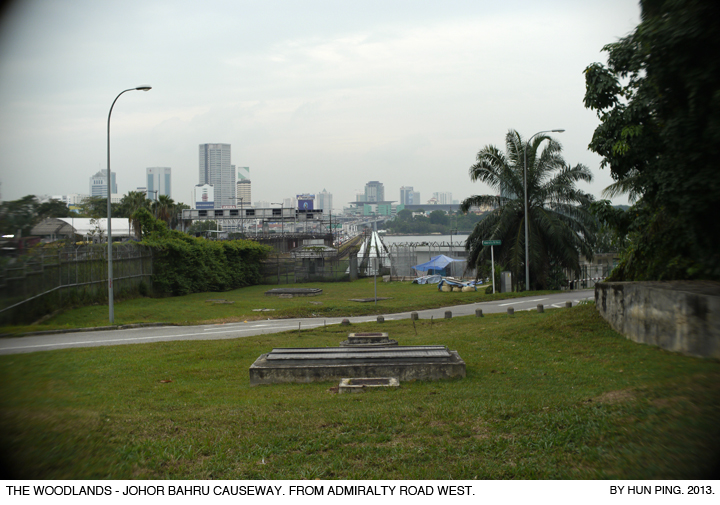
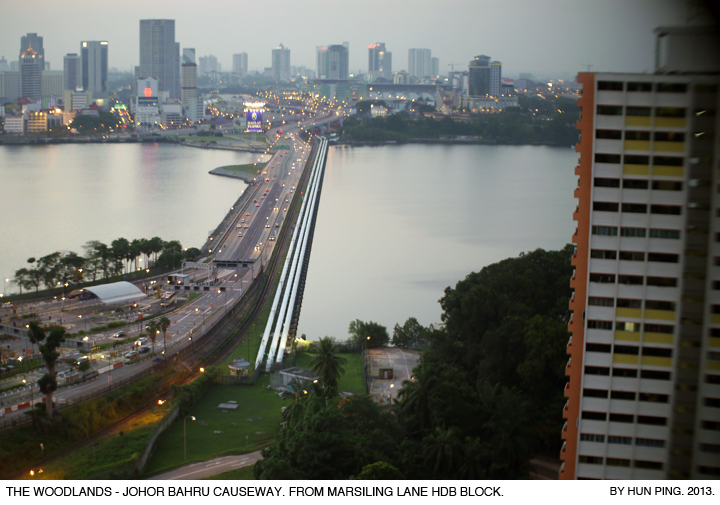
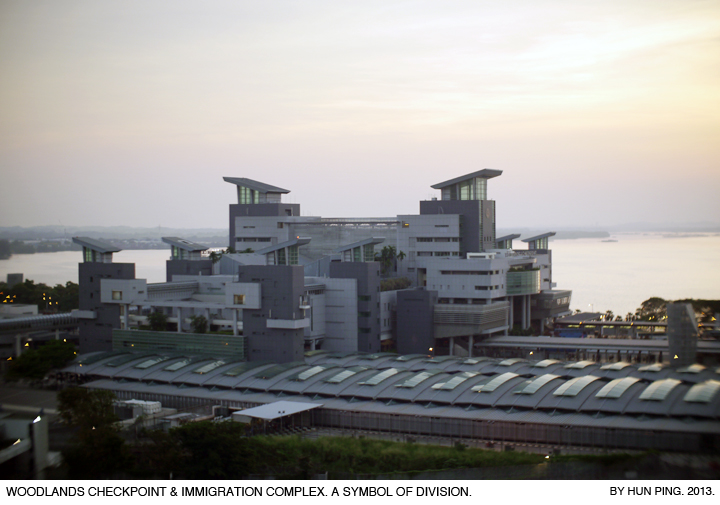
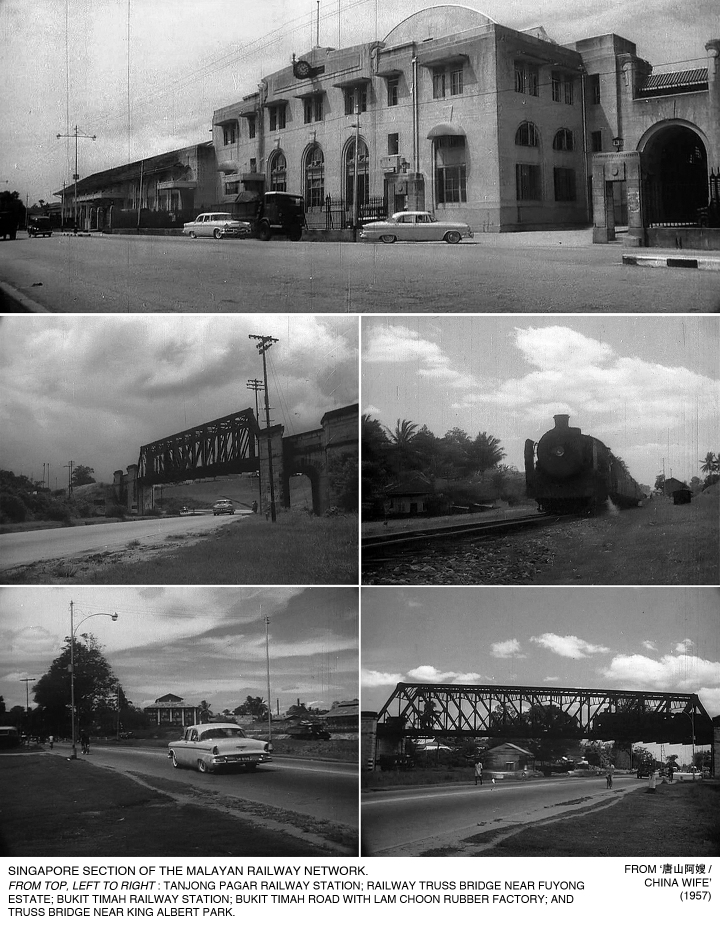
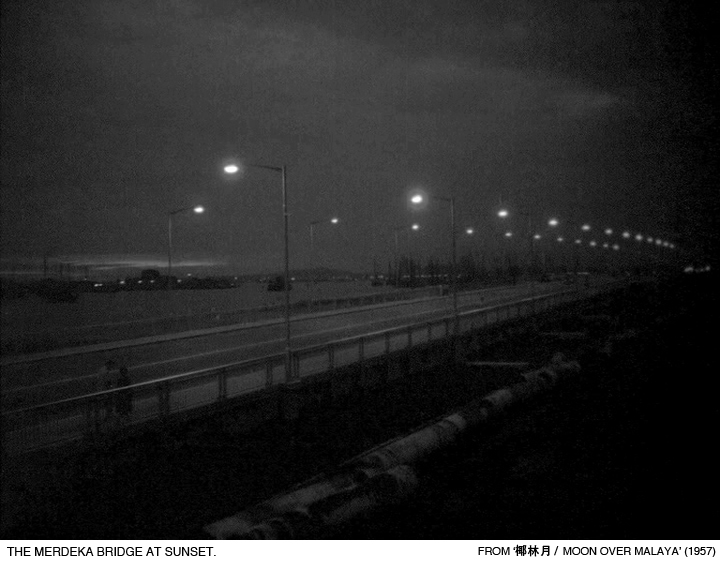
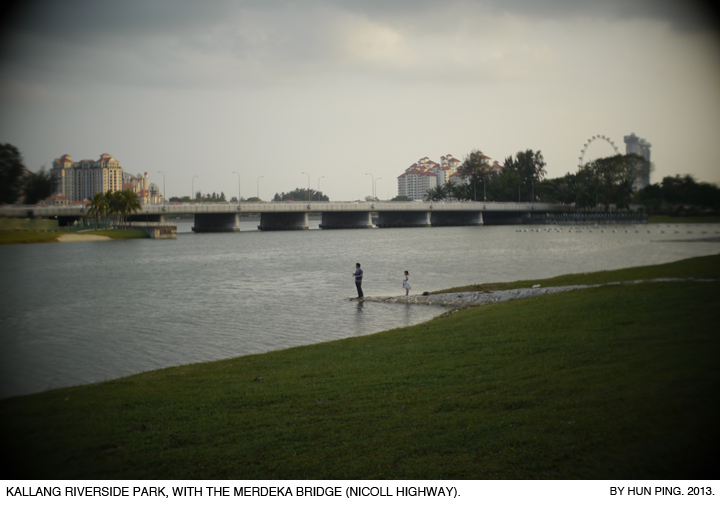
Dear Sir,
May I know where to purchase both Moon over Malaya and China wife dvd ?
Thank you.
Regards,
Luke Ang
Dear Luke,
Unfortunately, both ‘Moon over Malaya’ and ‘China Wife’ are not available on DVD.
‘Moon Over Malaya’ is in the collection of Singapore’s ‘Asian Film Archive’. They did a digital restoration of the film some years back.
Both films are also in the collection of the Hong Kong Film Archive. I believe if you make a prior arrangement with them, you can watch both films at the archive’s resource library in Sai Wan Ho, Hong Kong.
Hope this helps.
Regards,
Hun Ping
Pingback: F1 Singapore Grand Prix | daily diary
‘China Wife’ has many scenes of old Singapore. Would be great if DVD is made of it. It would definitely bring back memories.
Hi Edwin, thanks for dropping by the website. Kong Ngee’s ‘Nanyang Trilogy’ (inclusive of ‘China Wife’) deserves to be put out on DVD or Blu-ray. Here’s hoping that one of the film or heritage institutions in Singapore (eg. Asian Film Archive, National Heritage Board) will take it up. – Hun Ping
Hi,
May I ask how I can get digital copies of some of the pictures you have in this article, especially the ones from China Wife. And how do I get information about the copyright holders of these images for reproduction in a publication.
Thanks,
JJ
Pingback: 100 years of Love in Nanyang 百年好合 – #Hanfugirl